News
Recent news of Inland Waterway interest:
Content Purpose / Objective: To strengthen Towngate’s position as a commercial and industrial property expert with a portfolio of well-established and resourceful facilities throughout the north, boosting authority while enhancing its relationships with tenants. By providing details on the impact of the new lease, this press release also aims to boost Casper River’s position as a pioneer in the commercial barging industry, building trust, authority, and credibility to aid growth.
Headline (Trade): Casper River unveils UK’s most inland shipping port at Towngate PLC site
Headline (Leeds/Humber): Leeds becomes home to UK’s most inland shipping port thanks to Casper River and Towngate PLC
Casper River and Canal Transport (Casper River), the Humber’s leading inland waterway freight transportation company, has unveiled the UK’s most inland shipping port in Leeds.
The 1.5-acre site located in Stourton Wharf, owned and managed by commercial and industrial property specialist Towngate PLC, will see more than 5,893 heavy goods vehicles removed from UK roads for each water-based vessel in operation – easing congestion, reducing the likelihood of road-based accidents, minimising traditional port costs, and eliminating approximately 1,434 metric tonnes of CO2 emissions per barge.
The news comes eight months after Casper River was first incorporated as a subsidiary of Casper Chartering, providing an in-house logistical solution to keep freight on water for longer throughout Europe. While the company already has dedicated mooring facilities in Rotherham and Burton Upon Stather, Stourton Wharf marks its first self-operated inland waterway, streamlining commercial freight transportation capabilities for its customers.
Situated on the Aire and Calder navigation between Castleford and Leeds, the port is designed to handle a variety of bulk cargoes – including steel, aggregates, cement, grain, and scrap – from sea to canal to end user.
The opening of the site follows an extensive three-month renovation, completed with the support of landlord Towngate PLC. Along the 45-metre-long wharf, Casper River has cleared overgrowth, levelled the ground with aggregate to access moored vessels, demolished fifty metres of a ten-foot-tall brick wall, relocated site gates, and commissioned informative signs.
“Waterborne freight transport is a significantly more efficient, cost-effective, and sustainable option, but the misuse of our nation’s waterways means it’s not used as much as it should be,” said Sean Taylor, vessel operator at Casper River. “This is why we’re on a mission to revive the UK’s inland waterways and freight barges, and we’re already witnessing growth with partners who are just as committed to remedying the challenge as we are.”
“Each vessel will save the equivalent of the average annual carbon footprint of 174 homes. And if initial trials go well with our first cargo barge – an ex-Humber Princess oil tanker called the MV Off-Roader – we’re hoping to discharge four barges each week at Stourton Wharf.”
Casper River is already considering additional developments to the site. Soon, the company plans to use on-shore energy to power its vessels when they moor alongside the wharf. In addition to decreasing noise pollution for neighbouring homes and businesses, this will reduce the carbon emissions of its operations even further.
Jake Wilde, facilities manager at Towngate PLC, explained more about the partnership: “Casper had been working with the Canal and River Trust to source the right location for the scheme. But with so many of the UK’s wharves in decline and lacking the right mooring facilities for commercial barging, it was a difficult feat – until they were eventually pointed in our direction.
“With three private wharves running along our Stourton Wharf facility, it proved the perfect location, conveniently situated just a five-minute drive from the M1 motorway and the heart of Leeds City Centre. We’re pleased to have supported Casper River with the sizeable renovation, and look forward to facilitating the business’ ongoing expansion from our site.”
Keen to meet expected capacity requirements, Casper River is already in discussions with partners regarding additional fleet tonnage, supporting the growth of inland commercial barging throughout the Humber.
– ENDS –
Notes to editors
About Towngate PLC
Towngate PLC is one of the North’s leading commercial and industrial property experts. For over 60 years, the firm has successfully sourced, let, and managed properties for industry-renowned tenants including B&Q, Yodel, The Co-Operative, and We Buy Any Car.
About Casper River and Canal Transport
Casper River and Canal Transport, a subsidiary of Casper Chartering, was established in 2024 to help restore the commercial barging industry to its former glory and bring more efficient, cost-effective, and sustainable freight transport to the UK. The purchase and restoration of the Off-Roader – an ex-Humber Princess oil tanker now used to transport goods across the Humber’s waterways – marked the company’s early success. The unveiling of the UK’s most inland shipping port, coupled with strong partnerships with fellow commercial barging specialists, now paves the way for continued success.
The Commercial Boat Operators Association (CBOA) is pleased to announce the appointment of Mike Garratt as the Association’s new President. Mike succeeds our long serving President Dr David Quarmby CBE, who has agreed to become one of the two Vice President of our Association.
On May 11th the CBOA held an EGM for our members to formally elect Mike as our new President. The meeting was also an opportunity to pay tribute and to thank outgoing President David Quarmby for massive contribution to the CBOA over the last 8 years.
Our new President is currently Chairman of internationally renowned transport economists MDS Transmodal Ltd. and has spent the over 50 years employed in transport sector, starting as a local government transport modeller before spending 12 years as a researcher & lecturer in Maritime Transport at Leicester and Liverpool Universities.
Continue reading press release on Mike Garratt as its new President
A historic Yorkshire waterway has once again welcomed regular commercial traffic.
Following a significant investment by MMS Workboats of Hull and extensive trials, the 500-tonne capacity barge ‘MMS Off-Roader’ has been transporting marine aggregate from ABP Humber’s Albert Dock in Hull to Knostrop in Leeds. From Leeds the commodity is forwarded for use across West Yorkshire’s building industry.
Each trip is welcome news for those using Yorkshire’s strategic road network as it immediately takes over 18 heavy goods vehicles off the roads, a figure that will increase if commercial traffic using waterways grows as expected.
The organisers invited CBOA member Humber Barges Ltd to display Fusedale at the Leeds Waterfront Festival, 30th June to 2nd July, reflecting the association of Canal Connections (who were closely involved in the event’s organisation and support) with local barge operator Humber Barges Ltd.
Leeds Lock marks the absolute limit for craft of this size – the last time a 500 tonner was here was for the IWA National Rally in August 1981 when tanker Humber Enterprise discharged at the Esso wharf just downstream of Leeds Lock and then proceeded the few hundred yards or so to Fearns Island/Leeds Lock for display – many other smaller freight craft were able to pass through Leeds lock and moor near Leeds bridge at that 1981 event.
Fusedale H was one of six 500 tonne tankers built specifically (though not exclusively) to carry petroleum product from Saltend (Hull) to the Esso terminal at Leeds as part of a contract to move 2.5 million tonnes over ten years from 1967, and for which the Aire & Calder was enlarged and deepened and a new wharf and pipeline provided. (Prior to that the smaller tankers passed through Leeds lock to access Leeds New Dock to discharge). The contract was extended, finally finishing in 1982, by which time the navigation had been further enlarged to its present 600 tonne limit, with new craft of that size built. Fusedale commemorated the Esso traffic by pausing at the former Esso wharf (now a visitor and services mooring) and by carrying an Esso fuel can, before moving on to Fearns island where over 100 visitors were able to view and board the vessel over the two days of the Festival.
Thanks are due to Canal Connections for providing the services of a tug to assist arrival and departure (Fusedale H had to drop astern all the way down to Knostrop depot to turn), to Canal & River Trust and volunteer lock keepers for permitting and facilitating the movement, and to IWA (West Riding branch) for local support and assistance.
Photos – rear view credit David Lowe, and view from across the river credit Laurie Pooley.
18 March 2022
PRESS RELEASE - Call for major upgrade of waterways to get freight off roads and onto rivers and canals to cut pollution.
The Commercial Boat Operators Association, the Canal & River Trust, the Inland Waterways Association and the Port of London Authority are working together to kickstart a revolution in the way goods are transferred around the country.
Aim is to get more freight off roads, where traffic pollution is known to cause severe health problems in built up areas, and onto freight carriers on the UK’s rivers and canals.
“The problem is we’re using 19th century infrastructure to solve 21st century problems,” says John Spencer, director of GPS Marine, the largest multi-cargo intra-port barge operator on the River Thames and Medway, “but as an individual company we’ve been hitting our heads against a brick wall. We’re now working with major canal and river organisations to get this moving.”
The Port of London Authority has just launched a new consultation and vision for the Thames. The river is already the UK’s busiest inland waterway. Thames Vision 2050 identifies the development of Trading Thames as a priority, with strong long-term potential for using the river to connect the deepsea port outside London with customers and consumers within London.
Richard Parry, chief executive of the Canal & River Trust, said: “The transfer of traffic from trucks to barges can play a significant role in reducing carbon emissions, improving air quality, and supporting the broader Government objective to achieve net zero and mitigate climate change.”
Between them these organisations are approaching the Department for Transport, Defra and relevant select committees, aiming to deepen understanding of the opportunity and what needs to be done to make the most of it.
Further information:
- GPS Marine, Pamela Mounter T: 020 7228 9578, E: pamelamounter@hotmail.com
- CBOA, David Lowe, T: 07785 502478, E: d.lowe@cboa.org.uk
- IWA, Amy Tillson, T: 01494 , E: amy.tillson@waterways.org.uk
- CRT, Jonathan Ludford, T: 07747 897783, E: Jonathan.Ludford@canalrivertrust.org.uk
- PLA, James Trimmer, T: (44) 1474 562360 / 07713 65459, E: james.trimmer@PLA.co.uk
Notes for editors:
- GPS Marine, based in Upnor, Kent is the largest multi-cargo intra port barge operator on the Rivers Thames and Medway. The company has more than 50 years’ unrivalled experience in the maritime industry. It also operates in ports and harbours throughout Europe. https://gpsmarine.co.uk/
- The Commercial Boat Operators Association (CBOA) is the prime trade organisation involved in the effort to sustain and increase freight carriage on our waterways for economic and environmental reasons. http://www.cboa.org.uk/
- The Inland Waterways Association (IWA) is a national membership charity that works to protect and restore the country's 7000 miles of canals and rivers. https://waterways.org.uk/
- The Canal & River Trust (CRT) protects and preserves 2,000 miles of historic inland waterways. It recognises that waterborne freight can play a vital part in the UK’s wider green infrastructure, with clear public benefits for the environment and the economy. https://canalrivertrust.org.uk/
- The Port of London Authority (PLA) as a trust port are the custodians of the tidal Thames. Their operations cover 95 miles from Teddington to the North Sea. They work to keep commercial and leisure users safe, protect and enhance the environment, and promote the use of the Thames for trade and travel. http://www.pla.co.uk/
CBOA has joined The Inland Waterways Association as a corporate member. The IWA has good Parliamentary connections and last autumn arranged for David Lowe, our Chairman, to make a presentation to the All-Party Parliamentary Waterways Group. This led to the IWA and CBOA Vice-Chairman Tim West presenting the case for water freight to Robert Courts, the DfT Shipping Minister, whose remit includes freight moving by water. IWA has also been vigorous in supporting the CBOA’s objections about the temporary closure of the Aire & Calder Navigation for barges due to fish deaths, allegedly caused by barges stirring up contaminated silt in the Ferrybridge area.
Last year the West Riding Branch of the Inland Waterways Association was asked by the Same Skies Think Tank, to contribute a 900-word article to an alternative manifesto for the new West Yorkshire Mayor. Basically, a book of Eighteen Ideas for West Yorkshire.
A West Yorkshire Mayor was being elected for the first time in 2021, with the existing West Yorkshire Combined Authority becoming a mayoral combined authority, led by the new metro Mayor. With new powers, funding and responsibilities being transferred from central Government to West Yorkshire as a result of a devolution deal signed in 2020.
Same Skies describes itself as the citizen-led regional democracy network and think tank for West Yorkshire.
They were quite interested in ideas to tackle Climate Change. So, water-freight seemed an obvious choice. And naturally the article was discussed with the CBOA.
The article was written for a general audience, who knew nothing about the subject.
This piece was first published in AMPlify, An alternative manifesto process by Same Skies Think Tank, details of which can be found at
West Yorkshire’s Low Carbon Freight Waterway by Ian Moore
The public perception of our canals and river navigations is generally of a leisure resource. The idea of boating holidays or towing path walks might come to mind.
Of course, our inland waterways are much more than that. They are a functioning piece of industrial archaeology, green fingers stretching into our towns and cities, a catalyst for regeneration. And have many other functions and uses.
But what many people are unaware of is that some West Yorkshire waterways are capable of carrying large amounts of freight traffic. The principal freight route is the Aire & Calder Navigation between Goole, Leeds and Wakefield.
The navigation is a key component in enabling the sustainable transportation of freight between the Humber ports and Leeds.
At the moment there are aggregates being shipped to Knostrop, in east Leeds in 500 tonne capacity barges.
To put that in context, that is equivalent to 18 articulated lorry loads.
This load is moved using a lot less energy than a required for road haulage because, for the same mass, the force needed to move a barge through water is a lot less than the force required to overcome the friction of rubber tyres on tarmac roads. Carbon dioxide emissions for water freight are around 25% of those for road haulage. And nitrous oxide emissions are also reduced.
Also, there isn’t the particulate pollution from brake pad, tyre and road surface wear. And there is less noise pollution and fewer accidents.
Some people would point out that a lorry is faster but that is one lorry load. If a barge is carrying 18 lorry loads at once, depending on distance you are probably going to need more than one Heavy Goods Vehicle shuttling back and forth to move 18 lorry loads in the same time. And the lorries could be making the return journeys empty.
In terms of man hours, where multiple lorries are required this will use more manpower than a two person crew on a barge.
It is clearly sensible to move freight as close as possible to its final destination using the lowest carbon cost form of transport available. And only to utilise road transport where it is unavoidable.
At the moment there is plenty of spare capacity on the Aire & Calder Navigation. What is really needed to unlock the capacity of this route is inland wharves and the space to handle cargos, as to use water freight you have to be able to load and unload the cargo.
So what is vital is the completion of Port Leeds at Stourton. This is a 10 acre site in east Leeds with full planning permission.
With the space available at Stourton, some 200,000 tonnes of aggregates per year could be moved by water.
But the site has enough space to enable other traffics to be developed.
Going forward the Aire & Calder could form an integrated port corridor from the Humber that could carry around 2 million tonnes of freight a year.
To achieve this, improvements would be needed to the Aire & Calder Navigation to allow the use of Euro Class II barges of 6.5 metres beam. This would mainly involve widening part of Bulholme Lock.
Being able to use vessels that meet the Euro Class II standard on the Aire & Calder Navigation will make it easier to source craft for new freight traffic. Barges 61m long, 6.5m beam, 2.5m draft and 3.6m air draft would be capable of carrying 650 tonnes. Further minor modification of Castleford Lock would enable length to be increased slightly to give a carrying capacity of 700 tonnes.
And in the near future we could see zero emission, electrically propelled barges powered by hydrogen fuel cells.?
Applying fuel cell technology to barges is a lot easier to do than developing electric HGVs simply because water transport is more energy efficient than road transport, so you need less energy per tonne of freight. And a large barge has proportionally more space than a lorry to accommodate the fuel cells, fuel tanks and associated equipment. And green hydrogen production could utilise wind energy from North Sea wind farms or other sustainable power plants.
This is an opportunity to develop low energy, low carbon water transport which could be an exemplar from a national as well as a local prospective.
We must emphasise that water freight can be managed without any detriment to other uses of the waterways. It coexists with leisure boats. And doesn’t have any impact towing path users beyond providing the spectacle of large barge using the waterway.
In a way none of this is really radical or alternative. At both local and national level, government wants to decarbonise and improve the environmental performance of transport. And there are local and national government policies in place to encourage this.
We are talking about a modest investment for all of the benefits of a strategic freight waterway for Yorkshire. If we are to make Leeds carbon neutral by 2030, there is no doubt that alternative and greener transport options such as barges are going to have an important part to play. We need a modal shift of freight from road to railways and waterways. Ongoing pressure and support from local government is vital to ensure that this actually happens, as this is crucial to our low carbon future.
With many thanks to David Lowe, Chairman of the Commercial Boat Operators Association, for his valuable input.
CBOA is pleased to partner other waterway organisations in the production of a revised pleasure craft ‘Skipper’s Guide’ to the Commercial Waterways of the north east. Chairman David Lowe said “ leisure and commercial traffic can and does co-exist happily on the inland waterways, indeed some barge skippers have pleasure boats, but it was felt useful to update and combine the previous guides, issued in 2009, into one document. This explains how best to meet and pass freight barges, how best to moor, identifies tricky locations, and offers general safety advice.” CBOA hopes that skippers of pleasure craft will find the guide useful.
Cory, one of the UK’s leading recycling and waste management companies, has today announced plans to develop a major carbon capture and storage (CCS) project following the Government’s commitment to support CCS for the waste sector. Cory intends to apply CCS technology to the UK’s largest single-site energy from waste (EfW) operation, with the potential to create the world’s largest single-site EfW decarbonisation project. By 2030, this could deliver 1.5 million tonnes of CO2 savings per annum – providing a significant contribution to reducing the carbon emissions of the several million people Cory services in London and the South East.
The CCS project will involve the installation of technology to capture 90% of the emissions from Cory’s existing EfW facility, and its new, adjacent EfW facility which is expected to be operational by 2026. By capturing biogenic as well as fossil emissions from waste, such a project will play an important part in abating/offsetting difficult-to-decarbonise sectors of the economy, which has been recognised by the Committee on Climate Change as essential for the UK to meet its net zero target.
The project intends to use marine shipment to transport liquefied CO2 to an offshore subsea storage site, building on Cory’s maritime expertise which extends to the late 1700s. It highlights the strategic importance of the Thames as existing, natural infrastructure which could help to establish a transportation hub to ship CO2 from several other major industrial facilities in the region. The river reduces the need for complex infrastructure to transport CO2 and provides flexibility and confidence as Cory will be able to access operational subsea storage locations, including the industrial clusters already selected by the UK Government.
The project is part of Cory’s wider decarbonisation strategy, which includes the development of one of the largest district heating networks in the UK with Vattenfall. The otherwise wasted heat and water produced in the capture process would be channelled to the heat network, enhancing the environmental performance, operational efficiency and community benefit of the carbon capture system by enabling the network to heat many more homes.
Cory has notified the Planning Inspectorate of its intention to submit a Development Consent Order application seeking permission for this Nationally Significant Infrastructure Project.
Dougie Sutherland, CEO of Cory said, “Cory’s carbon capture project has the potential to be game-changing – not only would it be one of the largest CCS projects in the UK, but it would also lead the way for river-based solutions, using the existing, natural infrastructure of the Thames to transport CO2. It could also help other businesses along the River Thames to unlock their contribution to the UK’s net zero target by establishing a transportation hub using river shipment options.
“Carbon capture technologies will be vital in the fight against the climate crisis, and we welcome the Government’s recent announcement that it will provide financial backing for EfW CCS projects. Subject to the right regulatory framework and support being in place, Cory stands ready to invest and help the UK to enhance its position as a world leader in green technology.”
Robin Mortimer, Chief Executive of Port of London Authority, said: “Cory’s carbon capture project highlights the importance and strategic advantage of the River Thames. The Port of London is the largest port in the UK and its continued success depends upon developing a safe and sustainable future shaped by new technologies, emissions reduction and climate resilience. The Port of London Authority is supporting Cory on this exciting project to promote net zero river transportation, and an operational decarbonisation solution that benefits London and the South East.”
In addition to providing a crucial sanitary service for the treatment of non-recyclable waste, energy from waste is a key part of the UK’s net zero solution: the UK recycling and waste management sector has halved its greenhouse gas emissions since 1990 and aims to reach net zero emissions by 2040.
3rd November 2021
Birmingham & Midland Marine Services Ltd
Press Release – Marine safety & training business expands in the Midlands
Birmingham & Midland Marine Services Ltd offer a wide portfolio of services to the Civil Engineering, Rail, Utilities, Environmental, and Ecology sectors, working in an open water environment.
- Occupational Water Safety & Rescue Training
- Procurement, Project & Safety Management
- Commercial, Support, Safety & Rescue Vessel Services
- Boat Coxswain & Crew Training – Workboat, Powerboat & Safety /Rescue boat
Companies and organisations working on, beside or above open water are faced with a multitude of logistical complications; in fact, a ‘minefield’; ranging from obtaining workboats, floating welfare vessels, pontoons, safety boats, licences, permissions, marine risk assessments, obtaining lifejackets and rescue equipment, plus sourcing the appropriate training specific to the environment in which they will be operating.
Further complications can include providing emergency first aid support at these often-inhospitable waterside locations, seldom easily accessible by ambulance
Training requirements can be confusing for Human Resources and Health & Safety Managers: The HSE, DEFRA and the CDM Regulations 2015 all have a requirement for training and the levels of training required also change depending upon the location of the watercourse, the specific environment and the expected level of water contact those personnel are faced with.
Click here to read more of the Birmingham & Midland Marine Services Ltd Press statement
20 September 2021
“RESUMED BARGE OIL TANKER TRAFFIC TO ROTHERHAM FROM HULL IS VERY OPPORTUNE”, SAYS CBOA
The Commercial Boat Operators Association is delighted that the carrying of lubricating oils in tanker barges has re-started from Hull to Rotherham. The 600 tonnes capacity barges are now regularly arriving at the Exol Oils works in Rotherham.
“This shows the value of using barges”, said CBOA Chairman David Lowe. He continued: “With all the news about HGV driver shortages, it is salutary to remember that the crew of a 500 tonnes capacity barge can move that cargo more quickly than if they each drove an HGV between Hull and Rotherham”
“Barge use also fits in with the de-carbonisation agenda”, went on Mr Lowe. Research has shown that barges have for years created less emissions than heavy lorries – only 25% of that produced by lorries. Not satisfied with that, the barge industry is moving to use biofuels with hydrogen treated vegetable oil (HVO) being favoured. Barge companies have reported 90% reductions in net carbon dioxide emissions.
Even if all lorries were electrically powered, they would still create damaging dust particulates from brake pads, from tyre wear and from road surface wear. None of these arise with barges. “Using barges improves the environment and people’s sense of well-being,” said Mr Lowe.
“So I call upon the Government, in the year it hosts the 26th UN Climate Change Conference (COP26) this autumn in Glasgow, to increase infrastructure investment in improving the nation’s waterways”, said Mr Lowe.
Andrew Sanders of Mainmast which operates the barges, said “This resumption is very important for us. Our customer in Rotherham has always been keen to use water transport and we are delighted to be able to resume our environmentally enhancing service. “
The barge traffic resumed after repairs to the Aire & Calder Navigation had been completed. Last December, one of the canal banks (a little west of Goole) nearly collapsed. Engineering surveys showed a need for extensive works, hampered by the fact that the work was adjacent to a small aqueduct taking a river under the canal.
Please see photos of the barge attached and below (credit: Grahame Barrass)
Press enquiries should be made to:
David Lowe, CBOA Chairman on 07785-502478
John Dodwell, CBOA Marketing/Corporate and Public Affairs on 07802-961485
Trade enquiries should be made to:
For the North: Maik Brown (Business Development – Northern Area) on 07831-572601
For the South: John Dodwell – as above
Note for Editors
- The CBOA is the national trade association for barge operators and those involved in infrastructure maintenance. Accordingly, its officers are drawn from member companies and may or may not have an interest in the matters the subject of this Press Statement.
- Many of the UK’s canals are small and now mainly used for leisure. Narrow boats taking up to 20 tonnes each provide fuel and other services for residential and leisure boat owners, and waterside properties. They also deliver to and work on waterside construction sides and undertake niche deliveries, including “last mile” deliveries in urban areas.
- The scope for significant movement of good from lorry to water lies mainly in the waterways in and around the four main English estuaries – the Thames/Medway; the Humber (including the Aire & Calder Navigation to Leeds; the South Yorkshire Navigation to Rotherham); the River Trent to Nottingham; the Mersey (including the Manchester Ship Canal and the River Weaver to Winsford; the Severn up to Worcester.
These waterways are used by barges taking between 1,500 tonnes and 200 tonnes each, taking 150 and 20 respectively return lorry journeys off the roads. - The Tyndall Centre for Climate Change (Manchester University) reported that barge engine emissions can be 25% of those from lorries. In addition, lorries create damaging dust particulates from brake pads, from tyre wear and from road surface wear. None of these arise with barges. Using barges improves the environment and people’s sense of well-being.
- There has been a 24% increase in the number of businesses demanding suppliers publish environmental data, according to a study conducted by the Carbon Disclosure Project (CDP) in May 2020
- 261021-oil-barge
Oil Tanker barge en route from Hull to Rotherham
CBOA exhibited for the third year at the annual Recycling & Waste Management Show at the National Exhibition Centre near Birmingham in September. This Show was chosen as it enables CBOA to present the opportunities for moving waste and recycled materials by water, which is not only greener and cost effective but also can help to address the shortage of lorry drivers – a serious issue currently.
CBOA officials made a number of useful contacts at the Show, with serious enquiries significantly higher than in 2019 – not only relating to current water freight developments in the Humber region (including the proposed Port of Leeds) but on the inland waterways generally.
“RESUMED BARGE TRAFFIC TO LEEDS FROM HULL IS VERY OPPORTUNE”, SAYS CBOA
The Commercial Boat Operators Association is delighted that barge traffic carrying marine dredged aggregates has re-started from Hull to Leeds. The 500 tonnes capacity barges are now regularly arriving at Knostrop Wharf, east Leeds.
“This shows the value of using barges”, said CBOA Chairman David Lowe. He continued: “With all the news about HGV driver shortages, it is salutary to remember that the crew of a 500 tonnes capacity barge can move that cargo more quickly than if they each drove an HGV between Hull and Leeds”
“Barge use also fits in with the de-carbonisation agenda”, went on Mr Lowe. Research has shown that barges have for years created less emissions than heavy lorries – only 25% of that produced by lorries. Not satisfied with that, the barge industry is moving to use biofuels with hydrogen treated vegetable oil (HVO) being favoured. Barge companies have reported 90% reductions in net carbon dioxide emissions.
Even if all lorries were electrically powered, they would still create damaging dust particulates from brake pads, from tyre wear and from road surface wear. None of these arise with barges. “Using barges improves the environment and people’s sense of well-being,” said Mr Lowe.
“So I call upon the Government, in the year it hosts the 26th UN Climate Change Conference (COP26) this autumn in Glasgow, to increase infrastructure investment in improving the nation’s waterways”, said Mr Lowe.
Andy Collins of AC Marine Aggregates, the company whose aggregates have been brought to Leeds, said “The re-opening of the canal, thanks in large to the work completed by the Canal & River Trust, has enabled us to kick start the marine aggregates business back up in Leeds, which, if the news on the effects of global warming in the last 9 months has taught us anything, is a win-win for both our customers and the environment. A prime example of how delivery by barge is beneficial for everyone is our existing project supplying Amazon’s new distribution centre being built in Leeds by using Knostrop wharf we can massively reduce both CO2 emissions and vehicle movements.”
The use of marine dredged aggregates (from the North Sea) is a sustainable activity as nature replenished the deposits at sea. Not so with land based supplies.
The use of 500 tonne capacity barges and thus avoiding using heavy vehicles from inland quarries will also be beneficial for the environment. Each barge will take off the crowded M62 18 articulated lorries carrying 28 tonnes. Barges can help Leeds City Council in its efforts to improve air pollution and improve the well-being of its citizens.
The area being used at Knostrop is about one-tenth of an acre and is seen as a temporary phase. The Canal & River Trust’s wider ambitions are to see the development of a 10 acre site at Stourton on the outskirts of east Leeds as a wharf to handle at least 200,000 tonnes pa. of cargo. Planning permission for the wharf has been obtained and the West Yorkshire Combined Authority have offered £3.17m towards the costs. The full business case is now being developed which, if approved, would enable construction in 2022.
The barge traffic resumed after repairs to the Aire & Calder Navigation had been completed. Last December, one of the canal banks (a little west of Goole) nearly collapsed. Engineering surveys showed a need for extensive works, hampered by the fact that the work was adjacent to a small aqueduct taking a river under the canal.
Please see photos of the barge attached and below (credit: Andy Horn)
Press enquiries should be made to:
David Lowe, CBOA Chairman on 07785-502478
John Dodwell, CBOA Marketing/Corporate and Public Affairs on 07802-961485
Trade enquiries should be made to:
For the North: Maik Brown (Business Development – Northern Area) on 07831-572601
For the South: John Dodwell – as above
Note for Editors
- The CBOA is the national trade association for barge operators and those involved in infrastructure maintenance. Accordingly, its officers are drawn from member companies and may or may not have an interest in the matters the subject of this Press Statement.
- Many of the UK’s canals are small and now mainly used for leisure. Narrow boats taking up to 20 tonnes each provide fuel and other services for residential and leisure boat owners, and waterside properties. They also deliver to and work on waterside construction sides and undertake niche deliveries, including “last mile” deliveries in urban areas.
- The scope for significant movement of good from lorry to water lies mainly in the waterways in and around the four main English estuaries – the Thames/Medway; the Humber (including the Aire & Calder Navigation to Leeds; the South Yorkshire Navigation to Rotherham); the River Trent to Nottingham; the Mersey (including the Manchester Ship Canal and the River Weaver to Winsford; the Severn up to Worcester.
- These waterways are used by barges taking between 1,500 tonnes and 200 tonnes each, taking 150 and 20 respectively return lorry journeys off the roads.
- The Tyndall Centre for Climate Change (Manchester University) reported that barge engine emissions can be 25% of those from lorries. In addition, lorries create damaging dust particulates from brake pads, from tyre wear and from road surface wear. None of these arise with barges. Using barges improves the environment and people’s sense of well-being.
- There has been a 24% increase in the number of businesses demanding suppliers publish environmental data, according to a study conducted by the Carbon Disclosure Project (CDP) in May 2020.
A 500 tonnes capacity barge en route from Hull to Leeds with sea- dredged aggregates, passing through Whitley Lock, near Knottingley
Over the last 2 weeks, CBOA member the Esprit Group Trafford Docks in Manchester has welcomed 3 large ships bringing oversize & overweight project freight up the Manchester Ship Canal from destinations such as Croatia & Germany.
In late May, the m/v Hendrik S brought 3 large 35 tonne silo’s from Rotterdam into the heart of Manchester, via the Manchester Ship Canal. These were fabricated in Germany, destined for the Heineken factory in central Manchester. The massive silos left Esprit’s Trafford Docks, one each night at 1am, escorted by 4 GM Police bikes & traffic car plus a wide load support vehicle. The 4 mile journeys each took 2 hours, often travelling on the wrong side of dual carriageways in order to negotiate roundabouts & tight bends. Tram lines had to be lifted by TfGM & street furniture temporarily removed by Trafford Council.
In early June, the m/v Eems Transporter brought another 4 silos into Trafford Park, again all destined for the Heineken site. Another 3 nights of police escorts and great teamwork from Sarens Cranes, Finnie Heavy Haulage, GM Police, KeolisMetrolink, TfGM and Heineken, all under the management of Park Project Freight, saw everything again delivered safely and on time without causing any traffic disruption.
Immediately after the Eems Transporter left berth, the m/v Hendrik S returned to Esprit’s Trafford Docks, this time carrying a 128.5 tonne electricity transformer. The transformer started its journey in Croatia as part of a larger consignment of transformers & equipment aboard the m/v Eems Servant. This transformer was then transhipped onto the Hendrik S in Liverpool for the final leg up the Manchester Ship Canal to Trafford Park. Colletts Heavy Haulage were entrusted with project managing the big lift, using a 550 tonne strut-jib crane from Ainscough Cranes, & transport to a site in Rochdale. This time the final leg of the journey by road left Trafford Park at 6am on Sunday morning, requiring 5 GM Police bikes & a traffic car plus a wide load support vehicle, travelling at 10mph for the short trip via the M60, M66, through Bury & into a particularly tight access site in Rochdale.
Had these huge oversize & overweight cargo’s needed to travel to Manchester by road from a coastal port, the traffic chaos & congestion would have been immense. Thanks to companies such as Heineken recognising the great asset we have with the Manchester Ship Canal and choosing this as their preferred method of bringing oversize freight into Manchester, serious congestion was avoided and the much greener alternative was used.
It’s vital we continue to use the Manchester Ship Canal as much as possible to ensure it remains open for freight. Esprit Warehousing & Docks, who operate the Trafford Docks in Manchester, and the canal owners Peel Ports are working closely together to identify new business opportunities for freight on the canal. So it’s fantastic to see this hard work from both companies bearing fruit more & more.
CBOA Chairman David Lowe said “ The success of these movements demonstrates what the Manchester Ship Canal and our member Esprit Warehousing & Docks can offer in taking not only abnormal indivisible loads right into the centre of Manchester but also other cargoes whether by ship or by barge. This not only helps to reduce congestion along a busy corridor but also accidents, and emissions thus improving the quality of life for all. We congratulate all involved for their imagination, resourcefulness and success in utilising what many would regard as the UK’s premier waterway.”
Attend this vital update for the rail freight sector on 6th October and explore the most recent opportunities and issues facing the industry and discover how to respond to them.
Green recognition for Thames operators
The first Thames Green Scheme accreditations, recognising vessel owners’ efforts to protect the environment, have been awarded to Kent-based GPS Marine and Jetstream Tours (20 April 2021).
Launched by the Port of London Authority (PLA) last year, the initiative aims to help operators on the river in their work to improve their vessels’ green performance.
Contracting company, GPS Marine, active along the length of the tidal Thames, is the first recipient of a silver award, while Rochester-based Jetstream Tours has been recognised with a bronze award.
GPS Marine’s silver status reflects its pioneering work to trial technologies reducing emissions on the river, including the adoption of greener alternative diesel across its fleet of 16 tugs and the installation of post-combustion cleaning equipment. The company has also committed to achieve Net Zero emissions by 2040 and supports the litter charity Thames21.
New cargo interchange for Aire & Calder
New quarry and wharf for Aire & Calder at Stanley Ferry Wakefield Borough Council has granted planning permission for a new canalside gravel quarry on the the Aire & Calder Navigation, along with a wharf to service it. The quarry will be sited at Stanley Ferry, close to the Canal & River Trust’s lock gate workshops near Wakefield. It will produce aggregates for the Newlay Concrete Group, and there is a commitment in the application that it will all be carried by barge, possibly to Newlay’s base near Leeds. The plan estimates that around 1.6m tons can be quarried from 54 acres over two sites – Birkwood and Smalley Bight – straddling a winding bend in the River Calder. The project will take around a decade, after which the two holes in the ground will be turned into fi shing lakes. This would be the first time the Wakefield branch of the Aire & Calder Navigation traffic since the transport of aggregates ended in 2013. Prior to that, barges stopped taking oil to nearby power stations in the 1990s and coal shipments to Ferrybridge power station ceased in the 1980s. In addition, the parties are discussing the feasibility of
Articles published by kind permission of Waterways World. |
CBOA PERSUADES GOVERNMENT TO DROP PROPOSED FUEL DUTY INCREASE When assessing cases made for continued entitlement to use red diesel [with a lower duty rate]on the grounds that removing it could lead to perverse environmental outcomes, the water freight sector made persuasive arguments about the potential for modal shift if their fuel costs rose. As a result, the Government accepts that losing the entitlement to use red diesel would have a material impact on the sector’s competitiveness when compared with road haulage, and that this could encourage a shift to more polluting road freight Said David Lowe, CBOA Chairman: “We are very pleased that the Government has listened to our case that increasing fuel duty would risk materially adversely affecting the industry and risk forcing goods traffic onto congested polluted roads.” Mr Lowe continued: “At a time when we are seeing signs of a revival in barge use – viz more construction related traffic in London and a new Hull/Leeds service taking sea-dredged aggregates – this was not the time to hit the industry with extra costs”. The proposed fuel duty increase would have been from 11p a litre to 58p a litre for the duty alone, an increase of over 400%. The impact on operating costs varies per vessel but would have been between 5-15%. In an industry with low profit margins, these costs would have had to be passed on. This could well have resulted in customers deciding to move to road – which would be a classic example of the “law of unintended consequences”. “The barge industry is not resting on its environmental credentials”, said Mr Lowe. “Some of our Members are fitting more efficient engines and using hydrogen treated vegetable oil (Green D+) as a replacement for red diesel. This reduces overall emissions by about 86% and much reduces the carbon output per litre of fuel used. One of our members has just started a special Green D+ tanker barge service on the Thames to enable tugs and barges to use more environmentally friendly fuel.” The CBOA was particularly concerned about the potential impact on the operators of narrow boats in the Midlands (and elsewhere) who supply domestic fuel and other products to those living on boats or near a waterway. They faced an increase in fuel costs of 85% with the threatened extra fuel duty added. “Happily,” said Mr Lowe, “this threat has now gone.” CBOA notes that following the Government’s decision, it has decided to leave unchanged the present arrangements for pleasure craft.
Other extracts from the Government’s response are as follows. As the government has been persuaded by the cases made by representatives of the water freight sector and passenger ferries, the government has decided to maintain the entitlement to use red diesel for the whole commercial boat operating industry, regardless of whether they are operating on the UK’s rivers and other inland waterways or out at sea, to avoid ports and marinas needing to supply two types of fuel, which would otherwise have been necessary in some cases. Whilst commercial boats undertaking journeys within the limits of a port or at sea, including ferries and fishing boats, will remain entitled to the Marine Voyages Relief, maintaining their red diesel entitlement will avoid fuel suppliers having to offer two types of fuel where marinas/ports serve inland and seagoing vessels. Following consultation, the government has decided to maintain the entitlement to use red diesel beyond April 2022 for all commercial boat operating industries, including but not limited to the fishing and inland water freight industries. The government has therefore decided not to change the treatment of private pleasure craft in Great Britain, where they will continue to be able to use red diesel and pay their fuel supplier the difference between the red diesel rate and the white diesel rate on the proportion they intend to use for propulsion.
Please see attached photo of 700 tonnes of aggregates on passage to Wandsworth, west London , removing 35 lorries carrying 20 tonnes each from London’s congested streets (credit: GPS Marine)
Trade enquiries should be made to:
Note for Editors
These waterways are used by barges taking between 1,500 tonnes and 200 tonnes each, taking 150 and 20 respectively return lorry journeys off the roads.
|
|
CILT Merseyside & Warrington Group event - Friday 13th November at 3pm on-line and ITS (UK) Thursday 19th November at 3pm on-line.
Both with a Water Freight theme
“The reasons why rail freight should be exempted from the diesel fuel duty are just as valid for the barge industry,” said CBOA Chairman David Lowe. “I am amazed the Government did not realise that.” He added that at a time at a time when there were signs of revival in barge use, for example construction related traffic in London and a new Hull/Leeds service taking sea-dredged aggregates, this was not the time to hit the industry with extra costs. The barge industry would be affected in various ways. Those operating on inland waterways would have to pay the whole increased fuel duty. Those operating on tidal waters would continue to enjoy the Maritime Voyages 100% Relief. However, both groups would suffer from an increase in VAT from 5% (on red diesel) to 20% (on white diesel). Although recoverable, business would have to find the cash to pay the extra VAT before they got it back. For one CBOA member, this could be as much as £102,000 per quarter. The CBOA is particularly concerned about the potential impact on the owners of narrow boats in the Midlands (and elsewhere) who supply domestic fuel and other products to those living in boats or near a waterway. They face an increase in fuel costs from 55p per litre with the existing 11p a litre fuel duty to 102p per litre with the proposed 58p a litre duty – an 85% increase. The problem would evaporate if the CBOA’s call for equal treatment with rail – exemption – was met. “The barge industry is not, however, resting on its environmental credentials of being far less polluting than lorries,” said Mr Lowe. “Some of our members are fitting more efficient engines and using hydrogen treated vegetable oil (Green D+) as a replacement for red diesel. This reduces overall emissions by about 86% and much reduces the carbon output per litre of fuel used. But it will take time to move to new fuels and expensive new engines may be needed. In the meantime, a savage increase in fuel costs could drive traffic onto the roads. ” CBOA has submitted its formal response to the Government’s consultation. Please see photos of a barge attached (credit: Maik Brown), which has just started the new Hull/Leeds service. Further information: David Lowe, CBOA Chairman on 07785-502478 Notes
Photo shows a 500 tonnes capacity barge on route from Hull to Leeds with sea- dredged aggregates. This can replace 18 lorries each taking 28 tonnes. |
Commenting on the news that sea dredged aggregates have been delivered by barge from Hull to Leeds for the first time, Tom Riordan, Leeds City Council’s Chief Executive said:
“Using barges to transport goods brings with it a range of extremely positive environmental benefits, which is why as a council, we’ve worked incredibly hard to both protect and safeguard our waterways and wharves in Leeds through planning policy.
“It is great therefore to see this new barge traffic route carrying marine dredged aggregates now in operation from Hull to Leeds, This type of announcement will we hope encourage more businesses and organisations that are committed to reducing their environmental footprint, to investigate the possibility of transporting more of their goods by barge on our waterways in the future. Not only will one barge journey take the equivalent of 18 articulated lorries carrying 28 tonnes off the road on a daily basis which is huge, it will also play its part in reducing carbon emissions and air pollution. If we are to make Leeds carbon neutral by 2030, there is no doubt that alternative and greener transport options such as barges are going to have an important part to play.”
“We welcome the support from Tom Riordan”, said CBOA’s chairman David Lowe. “ Leeds have been great with their planning policies supporting water freight and I’m delighted this has borne fruit”
 There has been substantial progress in technological innovation and programme development around improving inland shipping performance and air quality since we hosted London’s first Greening Inland Shipping conference last year. To help us all keep up with developments, you are invited to join a webinar at 10 am GMT on Thursday, 5 November 2020.
There has been substantial progress in technological innovation and programme development around improving inland shipping performance and air quality since we hosted London’s first Greening Inland Shipping conference last year. To help us all keep up with developments, you are invited to join a webinar at 10 am GMT on Thursday, 5 November 2020.
This webinar is free to attend.
For more information click here
You can book for this event online
The Commercial Boat Operators Association is delighted that a new barge traffic carrying marine dredged aggregates has started from Hull to Leeds. The 500 tonnes capacity barge arrived at Knostrop, east Leeds, yesterday.
This is the culmination of many years’ hard work by various groups. It started with Leeds City Council’s minerals planning policy decision to safeguard from unsuitable developments a number of wharves in the City, including ones at Knostrop and at Stourton so they could be used to unload aggregates and other cargoes. Behind this lay a wish to see more use of marine dredged aggregates in Leeds and West Yorkshire rather than from inland quarries with consequential road haulage.
The use of marine dredged aggregates (from the North Sea) is a sustainable activity as nature replenished the deposits at sea. Not so with land based supplies.
The use of 500 tonne capacity barges and thus avoiding using heavy vehicles from inland quarries will be beneficial for the environment. Each barge will take off the crowded M62 18 articulated lorries carrying 28 tonnes. Barges emit 75% less CO2 than heavy lorries. They cause less dust and less noise than lorries. Barges can help Leeds City Council in its efforts to improve air pollution and improve the well-being of its citizens.
The combination of using marine dredged aggregates and of using barges for transport to Leeds is a “win/win” for the environment. With increased construction activity expected in Leeds and West Yorkshire, this is a very good time to be using barges to bring aggregates and other construction materials into Leeds.
CBOA chairman David Lowe said: “We have worked hard with Leeds City Council planners to create the basis for increased use by barges of the waterways of Leeds and the surrounding area. Today is the realisation of many years’ efforts. We are delighted that the use of barges creates the opportunity to reduce air pollution in Leeds by negating the need for HGVs and improve the well-being of its citizens. The proposed inland Port of Leeds at Stourton will increase the opportunities for more barge use.”
Andy Collins of AC Marine Aggregates, the company whose aggregates have been brought to Leeds, said “The use of barges from Hull means we can enter a new market for us – the area around Leeds and into West Yorkshire. We have been bringing sea dredged aggregates into Hull for some years to serve the local markets. We are grateful to the CBOA and their member firms for enabling us to turn into a reality our hopes to improve the environment by using “green” transport and extending the use of aggregates from a sustainable source.”
The area being used at Knostrop is about one-tenth of an acre and is seen as a temporary phase. The Canal & River Trust’s wider ambitions are to see the development of a 10 acre site at Stourton on the outskirts of east Leeds. Full planning permission has been obtained and the West Yorkshire Combined Authority have offered £3.17m towards the costs. The Trust is now seeking the balance of the funds required. The business plan is based on moving 200, 000 tonnes a year of marine aggregates – the equivalent of 8 barges a week
Please see photos of the barge attached (credit: Maik Brown)
Further information is available from
David Lowe, CBOA Chairman on 07785-502478
John Dodwell, CBOA Marketing/Corporate and Public Affairs on 07802-961485
Note for Editors:
- The CBOA is the national trade association for barge operators and those involved in infrastructure maintenance. Accordingly, its officers are drawn from member companies and may or may not have an interest in the matters the subject of this Press Statement.
- Many of the UK’s canals are small and now mainly used for leisure. Narrow boats taking up to 20 tonnes each provide fuel and other services for residential and leisure boat owners, and waterside properties. They also deliver to and work on waterside construction sides and undertake niche deliveries, including “last mile” deliveries in urban areas.
- The scope for significant movement of good from lorry to water lies mainly in the waterways in and around the four main English estuaries – the Thames/Medway; the Humber (including the Aire & Calder Navigation to Leeds; the South Yorkshire Navigation to Rotherham); the River Trent to Nottingham; the Mersey (including the Manchester Ship Canal and the River Weaver to Winsford; the Severn up to Worcester.
These waterways are used by barges taking between 1,500 tonnes and 200 tonnes each, taking 150 and 20 respectively return lorry journeys off the roads. - The Tyndall Centre for Climate Change (Manchester University) reported that barge engine emissions can be 25% of those from lorries. In addition, lorries create damaging dust particulates from brake pads, from tyre wear and from road surface wear. None of these arise with barges. Using barges improves the environment and people’s sense of well-being.
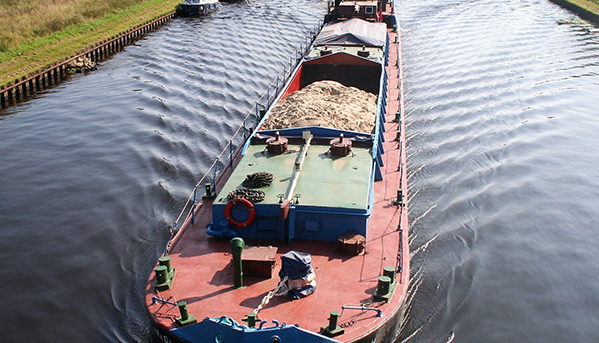
A 500 tonnes capacity barge en route from Hull to Leeds with sea- dredged aggregates.
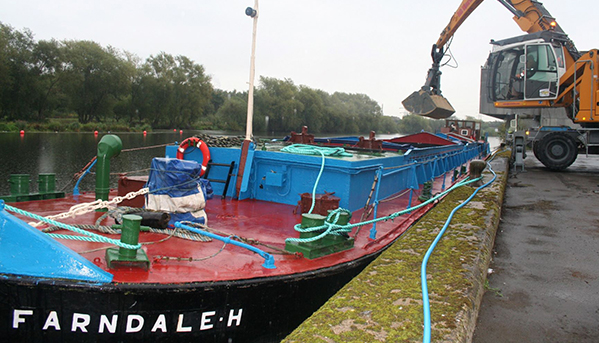
Unloading a 500 tonnes capacity barge in Leeds that brought sea-dredged aggregates from Hull.
The CBOA has for long pointed out the environmental benefits of using water freight – and in reducing road congestion. The Tyndall Centre for Climate Change (Manchester University) reported that CO2 from barges can be 25% of that produced by lorries. Other emissions – such as nitrous oxide - are less. Even if lorry engines improve and were to be wholly electric based, there would still be dangerous particulates from brake pads and tyre wear and road surface wear. None of these arise from using barges. Congestion on roads would not be reduced by electric lorries – using barges would. David Lowe, CBOA’s chairman, said: “I am very pleased that a DEFRA Minister is now realising that water freight can enable cleaner air and that the inland waterways are a huge asset in making this to happen. WE call on the Minister to work with navigation authorities in improving relevant waterways to enable waterborne tonnages to increase. It is noteworthy that last month global figures from the Carbon Disclosure Project showed a 24% increase in business demanding that their suppliers publish environmental date about how their goods were transported.” Barges (see photo attached) have been/are being used on the Thames in London to remove spoil from (a) the Elizabeth Line; (b) the Northern Line extension; and (c) the Thames Tideway Tunnel. Barges were also used to bring in concrete tunnel segments A summary of those works shows a reduction of 7,200 tonnes of carbon production compared to normal lorry movements; 158,000 lorry movements replaced by 3,900 barge movements (all accident free); improved kerbside air quality; reduced congestion; barges arriving on time (whereas lorries get stuck in traffic), resulting in more efficient working on site. Further information is available from David Lowe, CBOA Chairman on 07785-502478 or John Dodwell, CBOA Marketing/Corporate and Public Affairs on 07802-961485 Notes
These waterways are used by barges taking between 1,500 tonnes and 200 tonnes each, taking 150 and 20 respectively return lorry journeys off the roads.
|
Here is a link to a Q&A session with CBOA member Antoon Van Coillie of Blue Line Logistics nv published by Peel Ports. Antoon promotes the use of flat top barges with green propulsion systems and suggests a first UK roll out on the Manchester Ship Canal could be possible. |
|
Revised dates due to the Coronavirus emergency View our events page for more information.
|
Further to our news item below because of high water levels barge movements are currently from site across the river to Queens Staithe for transhipment to road vehicles.
Barges will also deliver all the steelwork for the construction and the precast concrete floor slabs that would be near impossible to deliver by road to the city centre location.
Waterway and wellbeing charity, Canal & River Trust are the navigation authority for the River Ouse. The Trust is supporting the project by enabling VINCI to use the waterway to make site deliveries, helping to limit the disruption to residents and visitors in York city centre.
Further information can be found on the West Yorkshire Combined Authority website
DANBRIT Shipping Ltd, have commenced work for Vinci on a project to remove spoil and rubble from a site adjacent to the Guild Hall in York, with the aim to transport the material by barge , using Dean Marine Service’s barge 'George Dyson' for the movement of the spoil and rubble, via the River Ouse to Goole Docks. As York City council would not advocate the use of lorries to remove the spoil and rubble due to the narrow streets and likely impact on the historic centre of York, the removal by barge was the obvious answer.
DMS’s barge 'George Dyson' is engaged in the removal of the material expected to be around 1000 tonnes over the next six to eight weeks , the barge is expected to carry between 170-190 tonnes on each 5.5 hour passage from York along the River Ouse to Jubilee Quay, Aldam Dock, within Goole Docks.
David Lowe, Chairman of the Commercial Boat Operators Association, said 'This is an excellent example of how the inland waterways and use of barges can help to reduce congestion and pollution caused by urban construction work, especially where the work site is alongside a navigable waterway, and is very much to be welcomed'.
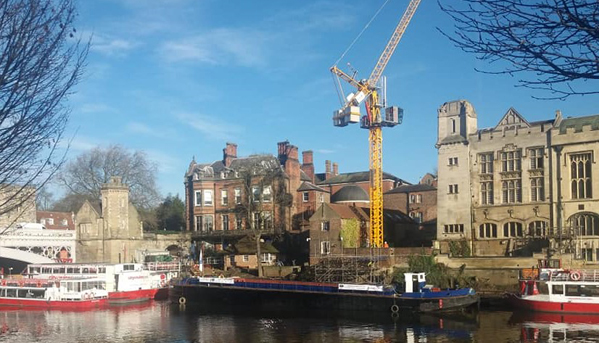 |
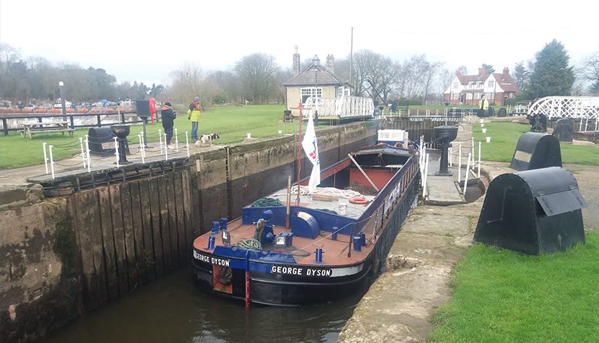 |
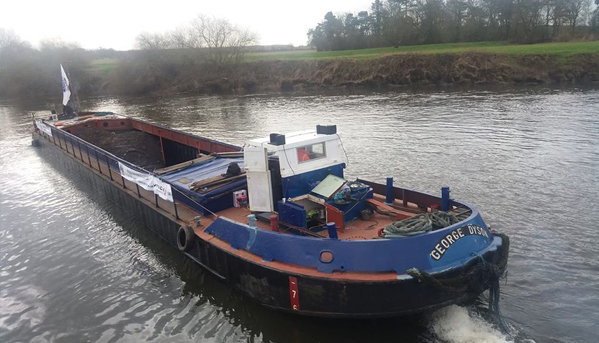 |
| Dean Marine Services 'George Dyson' preparing to load via tower crane the first load of spoil and rubble from the Guild Hall project in York. | DMS’s ‘ George Dyson’ penning through Naburn Lock with the first load of rubble and spoil en route to Goole Docks. | DMS’s ‘George Dyson‘ heading back down the River Ouse, having just penned through Naburn Lock , loaded with spoil and rubble from the York Guild Hall project. |
All photos Andrew Horn
Permission to publish the article courtesy of John Dean DMS and Jonas Frederiksen – Danbrit Shipping Ltd
The CBOA is delighted that Canal & River Trust (owners of the Aire & Calder Navigation from Leeds to Goole) has obtained planning permission to build a new wharf at Stourton, on the outskirts of Leeds. Once built, this will be the first new wharf in Yorkshire for nearly 20 years. The wharf will be able to handle barges carrying 500 tonnes +, thus taking the equivalent of 25 lorries carrying 20 tonnes each off the roads from the Humber ports to West Yorkshire.
David Lowe, CBOA’s chairman, said “In addition, this will make a contribution to cleansing the air of Leeds. Barges produce 75% less CO2 emissions than lorries and also less NOX. The support of the West Yorkshire Combined Authority and of the Minister for the Northern Powerhouse is particularly significant, as is the encouragement from Councillor James Lewis, Leeds City Council executive member for air quality,
Further information can be found on the Canal & River Trust website
CBOA exhibited for the second year at the annual Recycling & Waste Management Show at the National Exhibition Centre near Birmingham IN September. This Show was chosen as it enables CBOA to present to the metal, waste and other recycling industries, all with potential to move significant tonnages by water. As well as CBOA’s own presentation, our Members Cory Riverside Energy’s video ”The Green Highway” was shown, demonstrating the use of barges to take domestic residue waste through London to an energy from waste plant at Belvedere; the residual 200,000 tonnes a year of ash is then taken by barge to Tilbury for the construction industry. The video can be found here.
CBOA officials made several useful contacts at the Show, as they did in 2018. Enquiries related to the London, Merseyside, and Yorkshire areas. A number related to the exporting of material with enquirers interested in improving ways of getting their cargo to the major ports. The hoped for opening of Port Leeds will help to handle enquiries relating to the Humber to West Yorkshire.
Inland waterway transport is demonstrably better in environmental terms than road or even rail”: David Lowe, foreword.
This report was researched and written by Paul Gosling, a writer, broadcaster and researcher, who specialises in the economy, accountancy, government and the public sector, the co-operative sector and personal finances.
Valued advice and information has been received from officers of the Commercial Boat Operators Association (CBOA) David Lowe, John Dodwell, Richard Horne, member Antoon van Coillie and adviser Professor Rex Harris.
Contents
- Foreword
- Executive summary
- The benefits of moving freight by inland waterways
- Proposals for action
- Britain’s inland waterways network
- Best practice
- Overcoming the challenges for greater use
- The policy framework
The executive summary points out that using inland waterways for freight transportation offers significant and important advantages compared to both road and rail. For public bodies, greater use of inland waterways for freight transport offers many benefits:
- Greater use of inland waterways for freight would significantly assist with meeting air and noise pollution and climate change targets;
- Reduction in road deaths;
- Lessening the need for expensive new road building;
- Lowering road maintenance costs: HGV traffic is a major contributor to road wear.
A limited number of hard copies are being distributed and the report may be read here
The CBOA had been proposing for some considerable time that canal transport should be used for bringing in construction materials for the Icknield Port development project. Click here to read more.
All CBOA contacts receive a 10% discount for this event, which covers the following topics: 1. Receive key insight from the Government and Network Rail on their plans for the freight network To register please email conference@thewaterfront.co.uk or call 0207 067 1597 and quote the discount code 375CBOA. |
Use of waterways for freight and passenger services: advocated by government and facilitated by London’s Mayor. Click here to read more.
 The RWM Exhibition is now set to offset its own carbon footprint by planting a new UK forest, in partnership with @ForestCarbon_UK. They're planning to be carbon neutral by the year 2029! Watch the video to see their plan at http://bit.ly/RWMForest
The RWM Exhibition is now set to offset its own carbon footprint by planting a new UK forest, in partnership with @ForestCarbon_UK. They're planning to be carbon neutral by the year 2029! Watch the video to see their plan at http://bit.ly/RWMForest
CBOA will again be exhibiting at the Recycling & Waste Management (RWM) Exhibition, 11th & 12th September, in partnership with the Canal & River Trust.
CBOA are supporting the 27th Annual Rail Freight Group Conference on June 4th in London. Click here to read more.
Land & Water create Thames liquid highway - click here to read the article.
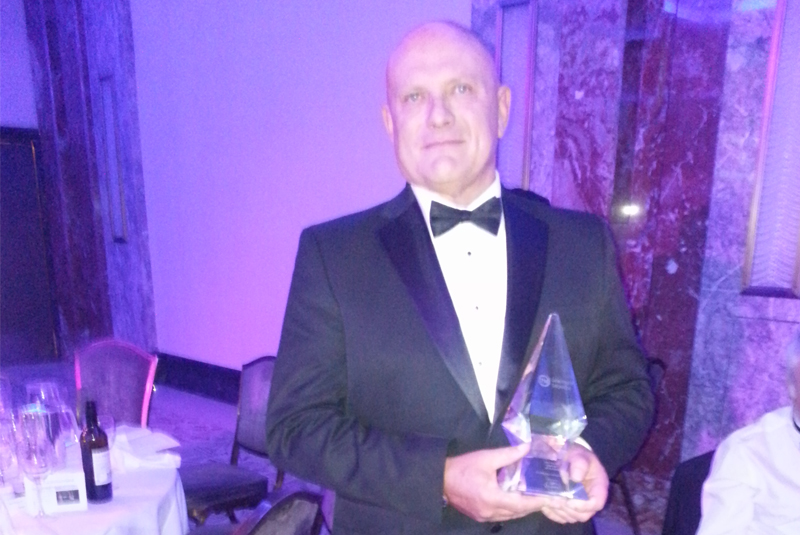 CBOA congratulates Members GPS Marine Contractors Ltd on winning the prestigious Freight Transport Association’s Sea Freight Operator of the Year 2018 Award, which was presented to John Spencer (GPS’ managing director) at a gala dinner of the whole logistics industry.
CBOA congratulates Members GPS Marine Contractors Ltd on winning the prestigious Freight Transport Association’s Sea Freight Operator of the Year 2018 Award, which was presented to John Spencer (GPS’ managing director) at a gala dinner of the whole logistics industry.
The citation read “Thames barge freight was once described as the ultimate sunset industry – not any longer. GPS Marine has responded to a massive increase in demand triggered by major central London infrastructure developments and associated concerns, by investing £4.8m in a fleet of 10 leading-edge hopper barges. This went hand-in-hand with a shift in health and safety culture and working practices.”
The judges’ comment was “An efficient, safe way to move huge volumes of aggregate through a crowded city”.
David Lowe, CBOA chairman said: “I’m delighted that the Freight Transport Association – which speaks for firms which send and receive goods – has recognised the value of the inland waterways freight industry. GPS are one of the leading barge firms on the Thames and Medway. Their tugs and barges can be seen delivering aggregates to the Hanson Wharf at Wandsworth and other wharves on the River. They have often worked into Docklands with aggregates for construction at Canary Wharf and also brought up the River concrete segments needed for the Crossrail Tunnel”
Between January and August 2018, CBOA member Wood Hall and Heward Ltd (WHH) operated a push tug and three hoppers carrying a range of aggregates from 20 mm stone to dust, top soil, sand & soil etc. to the Southall Gas Works construction site. Click here to read more.
London-based waste management company Powerday has announced a partnership with start-up company IRecycle (CBOA member) to offer a commercial waste service in the capital using barges to transport material. Click here to read more.
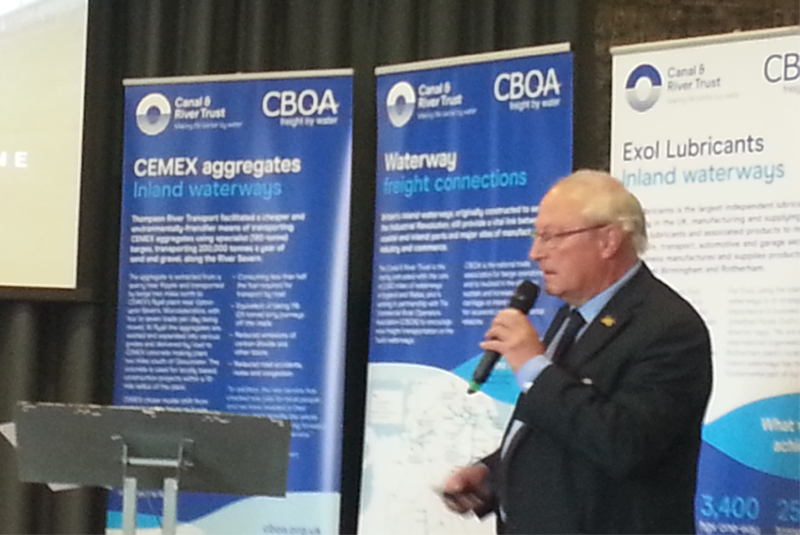 David Lowe, the CBOA chairman, was one of the key speakers at a Leeds conference in October, speaking about the role of the water freight industry in the modern world [see photo]. It was organised by Canal & River Trust together with the Freight Transport Association in conjunction with a visit to Yorkshire by members of the Inland Waterways Transport Solutions team. The IWTS team is an EU funded project under their Interreg programme which bring together inland waterways freight carriage interests from countries bordering the North Sea. This project began about a year ago and has a four year programme. Their work stream includes the development of smaller barges design with cleaner engines.
David Lowe, the CBOA chairman, was one of the key speakers at a Leeds conference in October, speaking about the role of the water freight industry in the modern world [see photo]. It was organised by Canal & River Trust together with the Freight Transport Association in conjunction with a visit to Yorkshire by members of the Inland Waterways Transport Solutions team. The IWTS team is an EU funded project under their Interreg programme which bring together inland waterways freight carriage interests from countries bordering the North Sea. This project began about a year ago and has a four year programme. Their work stream includes the development of smaller barges design with cleaner engines.
Among the speakers were Arjen Mintjes and Jorn Boll, both from the Maritime Academy, Harlingden, The Netherlands. The Academy trains over 2,500 people a year for the maritime industry – 50% of whom go to work on barges. In fact, the Academy provided training to new crews working on the new barges operating on the Thames Tideway Tunnel project. They also explained that some Dutch cities have banned large diesel engined lorries from their medieval city centres, insisting on barges being used – such as the 18 tonne capacity Utrecht beer barge – for local deliveries. This is a result of a trend for barges getting larger and so being unable to access the smaller city canals. The smaller barges collect from out of town barge terminals. In the Utrecht case, small barges are also used to take out waste – not the same ones which take in the beer!
CRT’s Steve Higham spoke with enthusiasm about the Trust’s aspirations for a new wharf for the Port of Leeds and the local authority offer of £3m + funding. He pointed out that Transport for the North reckon that road and rail capacity is close to capacity and so are looking at the under-used waterways. He mentioned that Yorkshire's air quality is one of the worst in Europe.
Sara Rogerson from a Swedish university spoke about trials which had been undertaken to move containers inland from Gothenburg, the country's leading container port. The inland waterway are already used by ships (e.g exporting timber to the UK and elsewhere) . The would-be barge operators are having to explain that barges don’t need pilots in the same way that ships do.
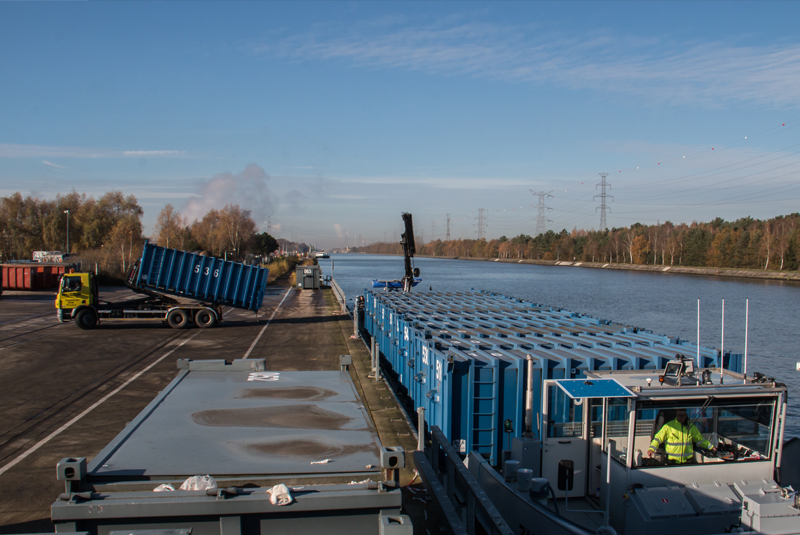 Antoon van Coillie from the Belgian based Blue Line Logistics spoke about his flat bed Zulu pontoon barges. He comes from the construction world and so brings a user’s perspective. He is very keen on reducing handling costs and all that his craft need for loading/unloading is a hard flat surface on which to unload. The photo [attached] shows a hook lorry loading roll-on/off containers but his team are as much at home with pallets being on/offloaded with a fork lift truck. He’s also keen on minimising crew costs and dispenses with a crew cabin. His existing two Zulu barges have been so successful that he’s soon taking delivery of another two. He's keen on using smaller barges (300 tonne capacity) in order to fit the delivery size to what the customer wants. He sees his concept as deliverable in the UK and has been talking to a number of possible users.
Antoon van Coillie from the Belgian based Blue Line Logistics spoke about his flat bed Zulu pontoon barges. He comes from the construction world and so brings a user’s perspective. He is very keen on reducing handling costs and all that his craft need for loading/unloading is a hard flat surface on which to unload. The photo [attached] shows a hook lorry loading roll-on/off containers but his team are as much at home with pallets being on/offloaded with a fork lift truck. He’s also keen on minimising crew costs and dispenses with a crew cabin. His existing two Zulu barges have been so successful that he’s soon taking delivery of another two. He's keen on using smaller barges (300 tonne capacity) in order to fit the delivery size to what the customer wants. He sees his concept as deliverable in the UK and has been talking to a number of possible users.
The seminar ended with a presentation from Adina Vaillaux from the Port of Hamburg marketing team who talked about enhancing Baltic country navigations in Sweden, Finland, Lithuania and Poland with an emphasis on moving containers on the River Vistula to Bodgosh.
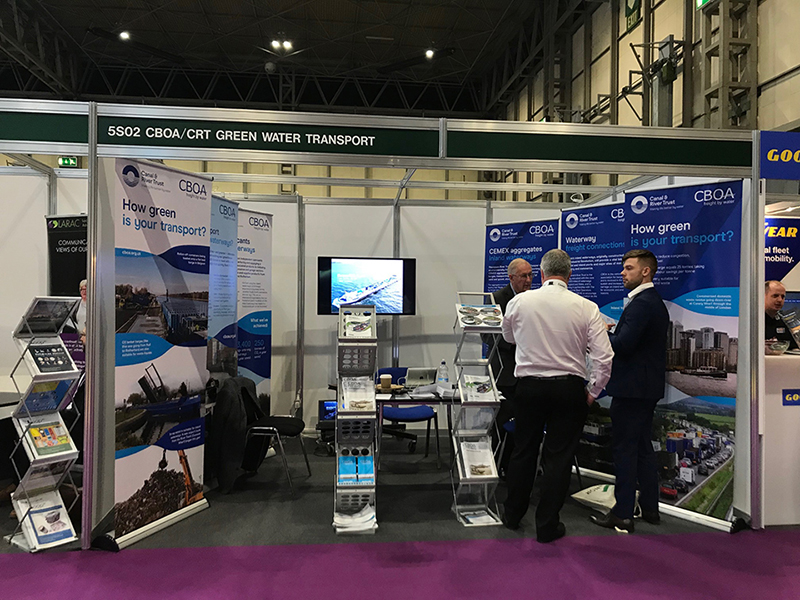 CBOA/CRT officers noted down as many as 17 enquiries over the two days of the RWM Show in September. Most were of high quality with few in the “generally interested” category. There were eight serious potential enquiries, all of which have been followed up by CBOA. They covered the Yorkshire, Nottingham, Thames/Medway and Mersey areas. A further two were from companies with whom CBOA is already in contact. Two others were from trade associations where CBOA believes it can help.
CBOA/CRT officers noted down as many as 17 enquiries over the two days of the RWM Show in September. Most were of high quality with few in the “generally interested” category. There were eight serious potential enquiries, all of which have been followed up by CBOA. They covered the Yorkshire, Nottingham, Thames/Medway and Mersey areas. A further two were from companies with whom CBOA is already in contact. Two others were from trade associations where CBOA believes it can help.
The CBOA exhibition stand, aided by the Canal & River Trust, was on display at the Recycling and Waste Management Show which was held at the National Exhibition Centre, near Birmingham. Previously, the stand has been at the Multimodal Show for several years.
RWM was different type of Show. Multimodal is a gathering of the logistics industry to which it is hoped customers will go. CBOA found it useful as some potential customers did go but the Show was more useful in establishing links with others in the logistics trade, especially the ports. On the other hand, RWM is a gathering of the recycling and waste management industry – potential customers – who were interested in looking at solutions for their various problems, including logistics.
STOP PRESS
Further enquiries have been received since the Show and any interested readers are encouraged to contact CBOA. Copies of the CBA’s purpose designed leaflet can be found by clicking here. This leaflet emphasised some of the main advantages of using water freight, such as:
500 tonnes capacity barges (such as those in Yorkshire) are more efficient users of labour time than 20 tonne capacity lorries, thus reducing labour costs per tonne. This is because if the barge crew instead drove lorries, it would take them longer to move the cargo than the barges do. These benefits can be greater on the Thames where barge sizes vary from 300 to 1,900 tonnes
- Barges are more efficient users of fuel than lorries as barges face less friction, water being smoother for barges than road surfaces are for lorries. Figures vary according to fuel prices but we hear of fuel being 40% of total costs for lorries but 20% for barges.
- Barges produce about 75% less CO2 than lorries do, according to a report from the Tyndall Centre for Climate Change.
The Association is pleased to support the Freight Conference being organised by the Freight Transport Association and and the Canal & River Trust in Leeds on 10th October. Please see Events page for further details and how to book.
The Loadstar, a shipping industry trade journal, has reported that Belgium and the Netherlands are introducing the world’s first fully electric, emission-free container barges this month (below, centre) - operating from the ports of Antwerp, Amsterdam, and Rotterdam.
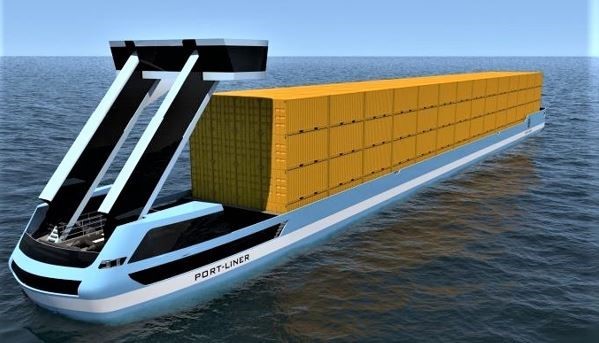
Norway which is working towards emission-free (and lower-cost) tourist shipping in the fjords with its first all-electric ferry, the ‘Ampere’, by 2025, will be interested in these barges because they intend emission-free water transport to be extended outside the fjords. Read more here
The vessels, designed to fit beneath bridges as they transport their goods around the inland waterways of Belgium and the Netherlands, are expected to vastly reduce the use of diesel-powered trucks for moving freight.
As the five barges, fitted with a power box giving them 15 hours of power, have no need for a traditional engine room, they have up to 8% extra space, according to their Dutch manufacturer, Port Liner (Van Meegen Group). Their electric motors will be driven by 20-foot batteries, charged on shore by carbon-free energy provider Eneco, which sources solar power, windmills and renewables.
About 23,000 trucks, mainly running on diesel, are expected to be removed from the roads as a result. Their use alone could lead to a reduction of about 18,000 tonnes per year of CO2, it is claimed.
The barges are being developed in the Netherlands with €7m in subsidies from the EU and additional funds from the ports involved.
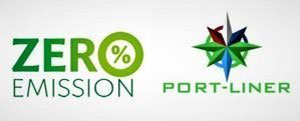
Port Liner believes it could produce about 500 barges a year to revolutionise the freight industry, although the electric motors and batteries could also be retrofitted into older boats.
At a later date, six larger 110m-long barges, carrying 270 containers, will run on four battery boxes capable of providing 35 hours of autonomous driving.
Portliner’s chief executive, Ton van Meegen, told the Loadstar that the barges would be the first in the world to sail on carbon-neutral batteries and that only the low bridges in the low countries prevented them from being loaded with more goods.
The Commercial Boat Operators Association (CBOA), the national trade organisation for barge and other commercial craft operators on the UK’s inland waterways, today warmly welcomed the news that the West Yorkshire Combined Authority (“WYCA”) has agreed to provide £3.17m towards the building of a new wharf at Stourton on the Aire & Calder Navigation on the outskirts of Leeds as part of the Port of Leeds project.
For some time, the Canal & River Trust, strongly encouraged by CBOA, has been reviewing building a new wharf at Stourton – with room for either one or two barges to be tied alongside at the wharf (depending upon demand). The site is well located in logistics terms, being close to the motorway and also rail connections.
The new wharf would be able to handle sea-dredged aggregates brought by barge to Leeds from the Humber. Steel and timber products are also possibilities, along with other goods imported via the Humber ports. With modest improvements to the Navigation, barges would be able to bring containers to Stourton, thus relieving road traffic congestion on the M 62 and reducing pollution. Existing barges can carry up to 550 tonnes each - the equivalent of 27 lorries carrying 20 tonnes. With the navigational improvements, it would be possible to bring across from Europe Euro-Class 11 barges which can take 650 tonnes.
David Lowe, CBOA’s chairman, said “This is very welcome news and shows the commitment of the local authorities to seize the opportunity of doing something to take traffic off the roads – to the great benefit of their local people.”
Steve Higham of the Trust said “The Canal & River Trust is very grateful to WYCA for their encouragement and support. This provides the opportunity for a new dawn for the freight use of Yorkshire’s waterways. This fits in very well with the Trust’s work with Transport for the North in identifying ways for moving freight in the North.”
16th July 2018
For further information, contact David Lowe at d.lowe@cboa.org.uk
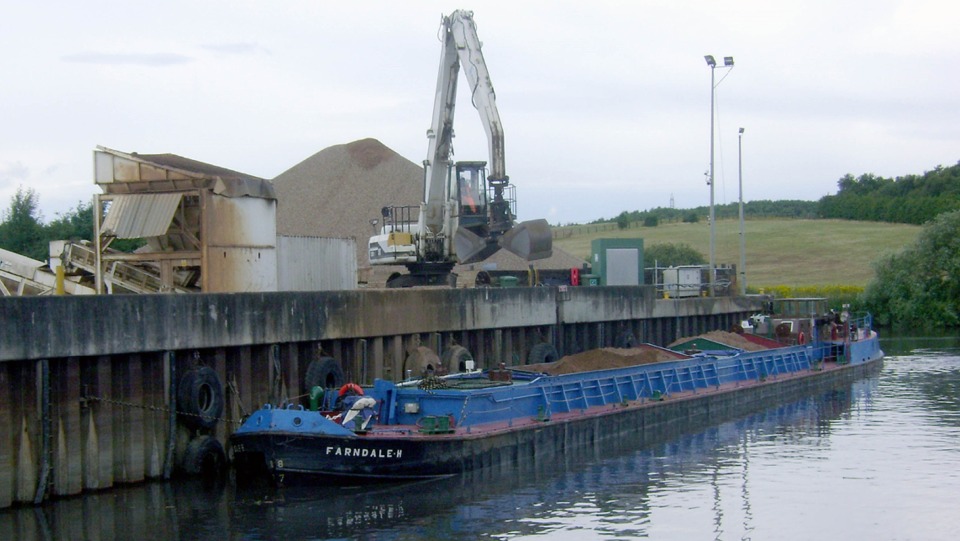
The photograph shows the size of barge which would be using the new wharf
The Thames and London Waterways Forum has been set up by the Mayor of London to advise him on addressing strategic waterway issues in London. The Forum has brought together the London Waterways Commission and the River Concordat.
Continues here
Waterways Policy - click here
Annual General Meeting
The Association’s AGM was held at the Bond in Birmingham on 26th April. Around 30 members and guests attended the event. An amended Constitution was approved and is posted on the Members page, along with the minutes of the meeting
Following the AGM we had presentations from Antoon Van Coillie (Blue Line Logistics) speaking by internet link about an innovative flat top barge operation in Belgium and Holland and UK aspirations for a similar venture. This was followed by Mike Garratt, who spoke about trends in shipping and opportunities for inland waterway freight, Chris Evans who updated us on the Canal & River Trust’s freight policy, and Port of Leeds venture, Julie Sharman who explained how the Trust was moving forward with its ‘health & wellbeing agenda’, and Prof Rex Harris (Birmingham University) argued the case for alternative fuel systems. Our south west representative Patrick Moss updated the meeting on the potential for a ‘Port of Worcester’.
We are grateful to our speakers for taking the time and trouble to attend and address us, and to our members for their support at this event.
Please contact the Chairman if you would like a copy of the PowerPoint presentations by Antoon Van Coillie, Chris Evans, Julie Sharman and Rex Harris.
CBOA response to the TfN draft Strategic Transport Plan
16 April 2018
Dear Sirs,
The Commercial Boat Operators Association (CBOA) represents water freight carriage by barge on the UK's inland and estuarial waterways and is accepted by the Government as the representative industry body. The CBOA is the prime trade organization involved in sustaining and promoting freight carriage on our waterways for economic and environmental reasons.
In several places the draft Strategic Transport Plan mentions the advantages and benefits of multi-modal transport for freight and modal shift to other than road means, which CBOA fully agrees with. Rail is extensively mentioned in many sections, however there appears to be little mention of the use of navigable waterways, either rivers or canals for modal shift. Sizeable commercial freight waterways exist in the Cheshire/Lancashire/Greater Manchester area and also the Yorkshire/Lincolnshire area.
These waterways include the following as large sized navigations:-
The Aire and Calder Navigation linking Leeds and Wakefield to Goole on the River Ouse, Hull and Immingham (600 tonne size);
The Sheffield and South Yorkshire Navigation linking Sheffield, Rotherham, Mexborough and Doncaster to Goole is a Euro II sized waterway capable of handling 650-700 tonne barge capacity;
The River Ouse linking Goole to Barlby/Selby/York (3000 tonnes to Howden Dyke, 1000 tonnes to Selby, 400 tonnes to York);
The River Trent from Newark and Nottingham to the Humber (400 tonnes from Nottingham; 3000 tonnes below Keadby;
The Manchester Ship Canal linking the Port of Liverpool via the Mersey to Warrington, Irlam, Trafford Park and Salford (10,000 tonnes);
The Weaver Navigation, linking the Manchester Ship Canal to the industrial estates around Runcorn and to Northwich (600 tonnes).
The importance of the waterways linking to Goole and thence to the Humber estuary, and secondly the Manchester Ship Canal linking the Port of Liverpool to Manchester cannot be over stated. The Humber estuary supports the ports of Hull and Immingham. These ports provide access and act as a gateway to the ports in the Baltic countries, Scandanavia and northern Europe. Significant amounts of freight are currently handled by the UK’s southern ports, which then travels overland to the north which is inefficient in transport terms and also energy consumptive. Greater use of the northern ports is highly desirable for this freight to be landed closer its destination. Removing both lorry miles and also rail miles for these freight movements is very desirable for emissions reduction and energy consumption reduction. Forward planning and investment is needed to expand the capabilities of these ports.
Many of these waterways owned and managed by the Canal and River Trust are amply described by the Trust which is also submitting a response to your consultation, so I will not re-iterate the detail here but will refer to them similarly. In addition to the Trust’s waterways, the Manchester Ship Canal and Bridgwater Canal in the North West are owned and managed by other navigation authorities. The Manchester Ship Canal is also vitally important and needs to be included in the issue of how water freight should be fully included and integrated together with the other transport means. CBOA fully supports the submission by the Canal and River Trust about use of waterways for freight.
In Leeds, several wharves have protected status. These wharves are available for use and consideration should be given as to how they may be deployed for freight transport to reduce the dependence on road transport and its associated drawbacks.
Other smaller waterways exist in all areas, which may also be suitable for smaller cargoes and niche market applications including opportunities for ‘last mile’ delivery within city areas – please see the later section on this.
Intermodal interchange
The section ‘Moving goods’ on page 34 and sub-sections of the draft Strategic Transport Plan mentions investment needed in Liverpoool2 and the Humber Ports. Rail is mentioned for freight interchange; however there is little or no mention of waterways in this section to destinations or originations inland, as mentioned herein above where the waterways pass through. CBOA would request that waterways are included for greater consideration with modal interchange. This may mean construction of additional wharves or road/rail interchange points. Of course the waterways do not reach all destinations or originations, but with careful planning there is no reason why a significant amount of cargo to these locations cannot be accommodated by water. Another benefit is that railways are not stretched beyond capacity around critical nodes such as the ports.
Potential Cargoes
As well as the bulk cargoes that can be carried, such as aggregates, demolition waste associated with new developments, including that associated with major infrastructure projects such as HS2, biomass/coal, steel, timber etc., other potential and current cargoes include oil products and other bulk liquids, recyclables, refuse derived fuels, steel, timber, palletised goods, grain and container goods.
Abnormal Indivisible Loads
Waterways are excellent for the transport of abnormal indivisible loads (AILs), which with further investment in infrastructure and facilities, could be significantly increased. An AIL waterway map can be seen at http://www.cboa.org.uk/downloads/091116-inland-waterway-freight-rutes-abnormal-indiviiable-loads.pdf with a description at http://www.cboa.org.uk/inland-waterway-freight-routes.html
The road disruption for a large AILS movement is highly undesirable – so much better to transport the items by water where little or no disruption is caused.
A good example of this is with power station sub-assemblies, where the power station is often beside a navigable waterway, such as at Ferrybridge near Knottingley on the Aire and Calder Navigation. Large 300 tonne transformers were successfully taken by barge on the River Trent to Staythorpe power station near Newark-on-Trent two or three years ago, having arrived by ship at a Humber port, and have also been taken from the Humber up the River Ouse to Drax.
This requires forward planning, with the planning consent being conditional upon using water transport where this is feasible for water side premises.
‘Last Mile’ delivery and waterborne warehousing
Consolidation centres for local delivery of light cargoes or goods are mentioned on page 83 in the Innovation section of the draft Strategic Transport Plan; these can also be waterside, utilising water transport to deliver to them, thus avoiding the increasing use of the urban road network and avoiding the associated additional congestion. This scheme has already been implemented with success in Utrecht, Netherlands for delivery of beer barrels/cases and other goods. See http://www.bestfact.net/zero-emission-beer-boat-in-utrecht/ and also http://civitas.eu/measure/city-distribution-boat. Plans are also in hand to implement a similar scheme in Paris.
‘Last mile’ delivery is also mentioned on page 35 under ‘Supporting the international connectivity of the North’ and also on page 55. It can be seen that ‘last mile’ waterways delivery assists and complements the road transport system in reducing the congestion in critical high usage road routes within inner city areas. We would wish to see inclusion of ‘last mile’ water transport in these sections.
Emissions reduction with modal shift of freight to waterways
Reduction of carbon and NOX emissions is regarded as “imperative” in the draft Strategic Transport Plan on page 35 in the section Moving Goods.
Many reports have been provided showing that water transport is always given as providing a major reduction of emissions when compared to road, and also a significant reduction when compared to rail.
A European Union 2001 report showed that one kilogram of fuel over one kilometre could move:
· 50 tonnes by road
· 97 tonnes by rail
· 127 tonnes by water
In a 2004 report, Royal Haskoning, the international environment consultants, reviewed energy use. In terms of energy used per tonne-kilometre (tonnage carried multiplied by distance travelled), they reported that
· water transport uses 0.2MJ;
· rail transport used 0.4MJ;
· road transport used 0.8MJ.
In March 2006 Sea and Water, the Department for Transport (DfT) sponsored but industry led group, reported that
· Moving freight by water reduced the amount of carbon put in the atmosphere by about 80%;
· Moving freight by water reduced the amount of nitrogen oxide put into the atmosphere by about 35%;
· Transport (excluding aviation) caused about 25% of the UK’s total CO2 emissions with road accounting for 22%; of this 40% come from lorries and buses.
· Transport emissions contribute towards poor air quality. The Department of Health estimated that between 12,000 and 24,000 deaths each year arose from poor air quality.
In 2011 the DEFRA consultation paper about transferring BW to CRT stated that "Freight transport by water can be cheaper than transport by road as moving goods by water can be more fuel efficient, leading to CO2 emissions that can be one-quarter the level of road transport", quoting the Tyndall Centre for Climate Change.
For more information a case study for emissions reduction with the benefits of water transport can be seen in a report produced by ASD Metal Services at http://cboa.org.uk/downloads/environmental_impact_report.pdf
It compares barge to lorry transport when carrying steel from Scunthorpe to Stourton, Leeds. In conclusion ASD’s expectation was that over a year there would be a 45% reduction in fuel used with the consequent reduction in emissions.
Planning for future growth
This section in the draft Strategic Transport Plan should also include waterways for freight in terms of provision of wharves and modal interchange points with road and possibly also rail where this can be seen to assist with the overall design of the future transport plan freight routing.
It may also be good forward planning to examine whether waterway expansion programmes would be beneficial. It is estimated that the cost of waterway construction could be significantly less than either road or rail. Would a trans-Pennine route linking the ports be beneficial?
Aire & Calder Navigation improvement works were estimated in c 2003 at (only) £10 m. This would entail modest widening of parts of two locks, and the raising of five bridges to allow carriage of containers in Euro II size craft of up to 700 tonne capacity. Since then whilst costs have generally gone up, bridge raising costs have come down as more experience is learned from similar rail work.
Also as the track is already there, no need for prolonged planning enquiries and so a "quick win" is possible.
Major Waterways Map
A map showing the navigable waterways is on the last page. The larger waterways mentioned above are shaded in blue.
I trust that you be able to utilise CBOA’s information above in the review of the draft Strategic Transport Plan. If you need any further information I would be pleased to assist.
Yours faithfully,
Richard Horne.
Commercial Boat Operators Association (CBOA)
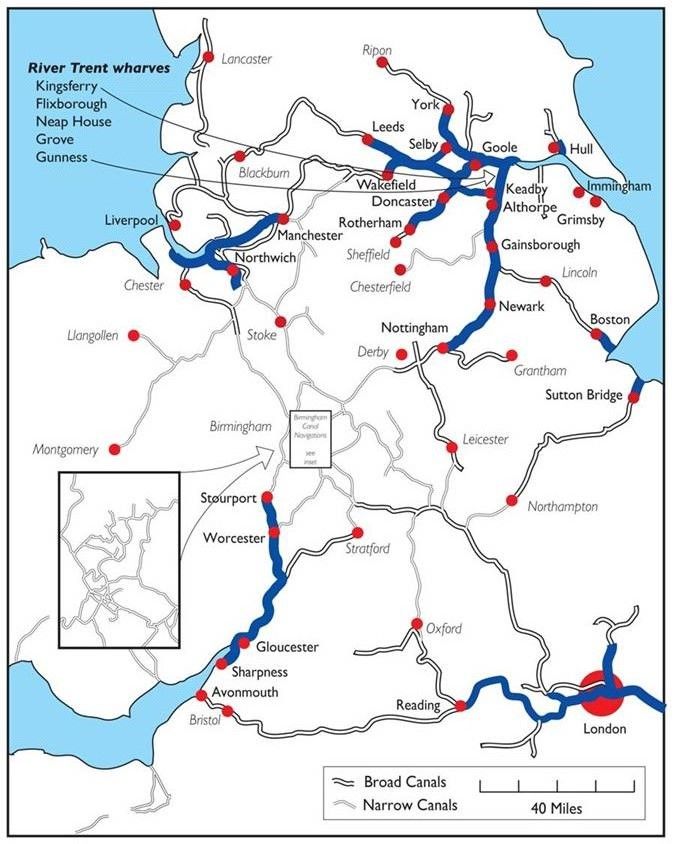
WATER FREIGHT CONFERENCE IN DONCASTER
Some 60 people gathered at Doncaster Racecourse last November for the Freight Transport Association’s annual water freight conference, organised by their Freight by Water section.
The speakers included CBOA’s chairman David Lowe and Lucy Hudson, Lead Officer – Freight & Logistics for Transport for the North. Warren Marshall, Peel Ports Group Planning Director spoke about the expansion of traffic on the Manchester Ship Canal and future plans, linked with the expansion of Liverpool’s capacity to take larger container ships and so offer an alternative to Felixstowe and Southampton. Warren told the audience that the Liverpool/Manchester container shuttle service was now operated by the 300 teu vessel THEA. Starting from 3,000 teu moved in 2009, the 2016 figure was 36,500 teu – an increase of over twelvefold.
Tom Jeynes (Sustainable Development Manager, APB Humber) spoke about Associated British Ports’ hopes and plans for the future, including making use of the waterways to Leeds and Rotherham. He was followed by Chris Evans, a transport consultant engaged by Canal & River Trust , who spoke about their plans to develop the Port of Leeds, coupled with the advantages of using water freight.
The second session was started off by Graham Dixon, Group Director of our Members Esprit Group. They have taken a lease of the Manchester Dry Docks site and have renovated the buildings and hard standing for warehousing and onward road delivery. Being close to the flour mills of both Allied Mills and Rank Hovis McDougall had enabled Esprit to store British grain prior to delivery to the mills. Graham emphasised his desire to receive water borne cargoes and showed pictures of abnormal indivisible loads being unloaded from ships – very large cylinders destined for a local brewery.
Graham also delivered (on behalf of Antoon Van Collie who was ill) a speech about the Belgian based Blue Line Logistics new pontoon barges. These flat decked craft are designed to be used by goods on pallets; in builders’ bags; in skips; in roll-on/off containers. Ease of handling is a key feature and there is no need for expensive land based lifting gear. The session ended with a presentation about the use of oversize bikes and small electric powered vans for “last mile” delivery in congested urban areas.
David Lowe spoke about the opportunities and challenges in the North and explained proposals for modest improvements which would enable Euro Class II barges to get to Leeds. They have a carrying capacity of 650 tonnes or 32 teus.
The feeling was the conference had been effective. Of the 60 people present, over half were from companies of various sorts with the rest being drawn from navigation and other authorities and CBOA Members. It was nice that CBOA played a part in the organising of the conference as the majority of the speakers were suggested by CBOA personnel.
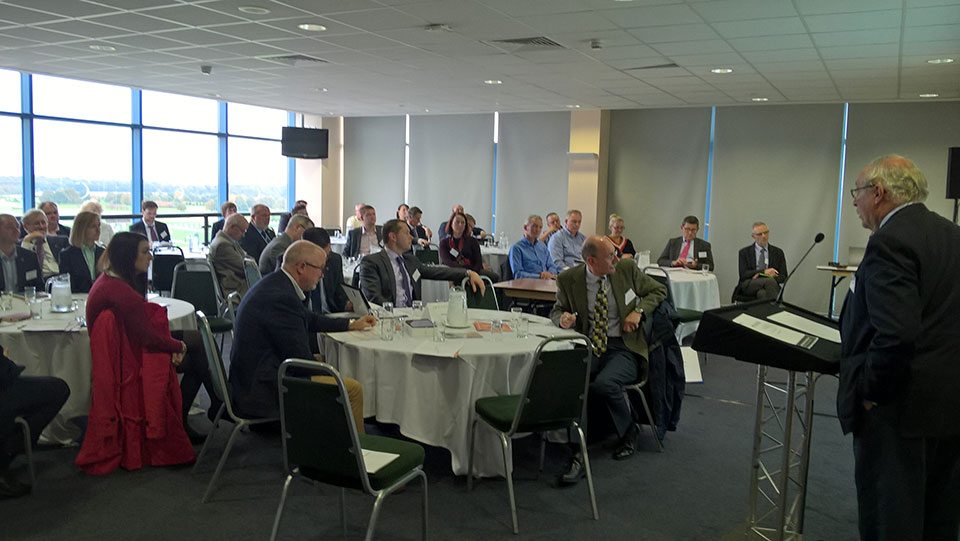
Click here to view the above photo
Would you like to help with the work of CBOA? We are looking for a new Secretary. In this modern world of communications, geographic location doesn't matter, as long as you can travel as needed (expenses can be provided). As a minimum this will include responding to enquiries, organising the Association in planning and running (with the Chairman) the Annual General Meeting (including helping to identify speakers) and organising the quarterly Committee meetings (agendas etc – minutes are taken by the Minutes Secretary). To some extent the position is what the individual wishes to make it and the work can be expanded into trade promotion and other fields if the Secretary has the right background
For many years waterway transport of timber has been advocated in Scotland and in 2015, Roland Stiven, the Timber Transport Forum’s Project Officer, made an information-packed submission to the Scottish Parliament.

The TTF is a partnership of the forestry and timber industries, local government, national government agencies, timber hauliers and road and freight associations. It seeks to access and market UK timber sustainably, minimising the impact of timber transport on the public road network, on local communities and the environment, using other modes of transport where possible. Two examples were given:
• a 2014 Waterborne Freight Grant totalling £960k was made by Boyd Brothers to transport sawn timber from Corpach to Tilbury by sea. https://www.pressreader.com/uk/the-press-and-journal-highlands-islands/20141111/283042642799683
• the movement of timber from Glen Etive, after the loch’s jetty had been rebuilt, to Inverness via the Caledonian Canal http://www.seabreezes.co.im/index.php/news/coastal-commentary/1121-kanutta-in-the-canal.
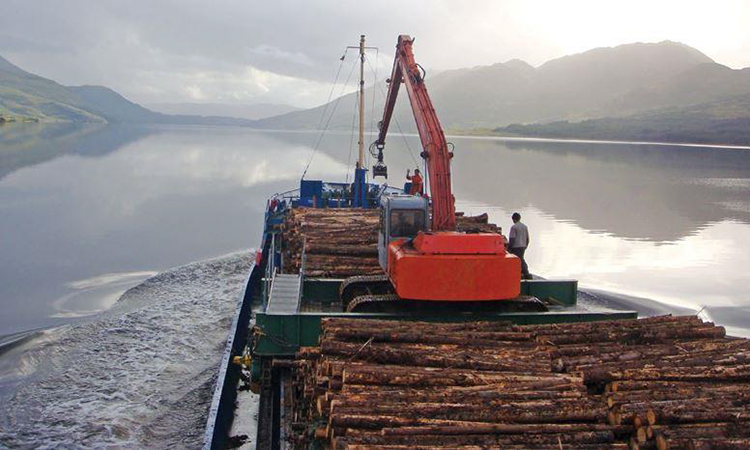 |
| The Norwegian Kanutta (42.0 x 8.0 x 4.3 metres, 1,450 dwt - pictured on the Caledonian Canal) has been moving timber through the Caledonian Canal from Loch Etive to Inverness and the Red Baroness (65.0 x 10.7 x 4.0 metres, 1,450 dwt) has been well employed in coastal timber movements. The Caledonian Canal provides a shortcut between Scotland’s west and east coasts. Use of the Great Glen company’s little ships is saving thousands of truck miles on remote highland roads. Such ship movements are an essential part of a modern sustainable forest industry, important in large parts of remote Scotland. |
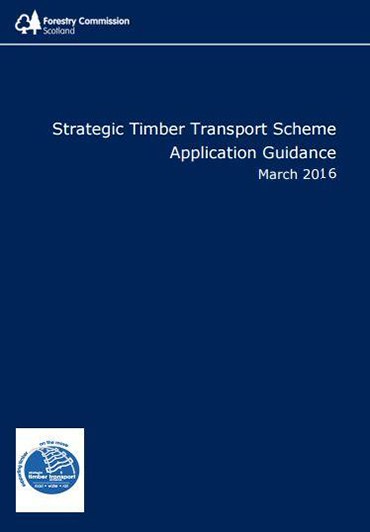 The Scottish Strategic Timber Transport Scheme (2016) aims to promote the sustainable transport of timber in rural areas of Scotland for the benefit of local communities and the environment
The Scottish Strategic Timber Transport Scheme (2016) aims to promote the sustainable transport of timber in rural areas of Scotland for the benefit of local communities and the environment
It recommends making ‘In-Forest’ road links to water and rail routes, constructing, improving and upgrading of informal roads, as well as improvement and upgrading short stretches of eligible minor public roads to enable timber extraction by rail and inland waterways.
Investments will aim to reduce the overall environmental impact of timber transport operations by reducing road mileage and/or fuel consumption and a contribution to the development of non-road transport modes such as rail and water.
Awards under the Mode Shift Revenue Support scheme were mentioned as a possible source of funding, though the latest grant awards table lists no Scottish waterway freight grants.
The Department for Transport gave awards from the Sustainable Distribution Fund, designed to support the carriage of freight by rail and water that would otherwise be carried by road. Support from this bid round is expected to remove up to 15,487 lorry journeys from the roads of Great Britain between January 2017 and March 2017 and achieve environmental and social benefits that result from using rail or water transport instead of road.
Its Waterborne Freight Grant scheme is intended to assist companies with the operating costs, for up to three years, associated with running coastal and short sea shipping freight transport instead of road (where short sea/ coastal shipping is more expensive than road). However, following the January 2017 Bid Round , no English waterway freight grants were listed.
Commercial boat operators and the Canals and River Trusts who wish to apply for such grants can learn more about the procedure here.
Detail 2015
Application
http://scotland.forestry.gov.uk/images/corporate/pdf/stts-application-guidance-2016.pdf
https://www.transport.gov.scot/media/4314/mode-shift-grant-awards-table-aug-16.pdf
http://www.heraldscotland.com/news/12236471.Clydeport_sets_sail_with_joint_timber_plan/
2000
https://www.waterways.org.uk/iwa_publications/waterways_mag/february_2012/inland_shipping_news
Commercial Boat Operators Association – 2017 AGM
The 27th April saw the CBOA hold its AGM at The Bond, Birmingham, as last year the year’s event was chaired by our President David Quarmby. The AGM received the Chairman’s annual report on the association’s activities during the year and approved the accounts. Following the official business of the AGM the meeting was addressed by three guest speakers. The first presentation was from Gerry Heward of Wood, Hall & Heward Ltd, he gave details of his company’s barge operations supporting civil engineering works and freight particularly in the London area, Graham Dixon of Esprit Warehousing & Docks spoke about his company’s investment in the wharfage and warehousing in Trafford Park and the opportunities he saw for growth and Louise Hall of the Shipowners P&I club/CTRL Marine Solutions closed on behalf of the guest speakers by addressing about her company’s technical, risk and legal services offered to both members and non-members. All three presentations were very informative and thought provoking, consequently, they were well received by our members and the presenters were thanked for their input to the success of the day. In addition to the guest speakers one of our members, Patrick Moss, gave a short presentation on the opportunities to develop the freight on the River Severn and the potential development of the Port of Worcester. This was followed by an update on progress of the development of the Port of Leeds by Chris Evans who is overseeing the project on behalf of the Canal & River Trust. Our President and Chairman were pleased to see so many members attend; those members that were unable to be at the event are encouraged to read the minutes which are also available on our website.
Minutes - click here


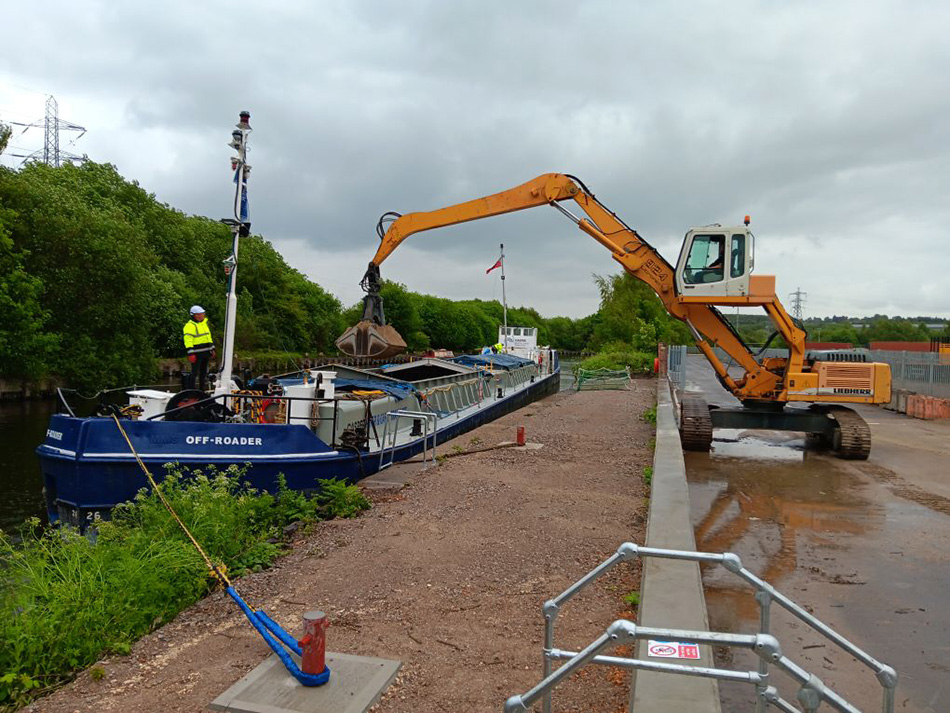


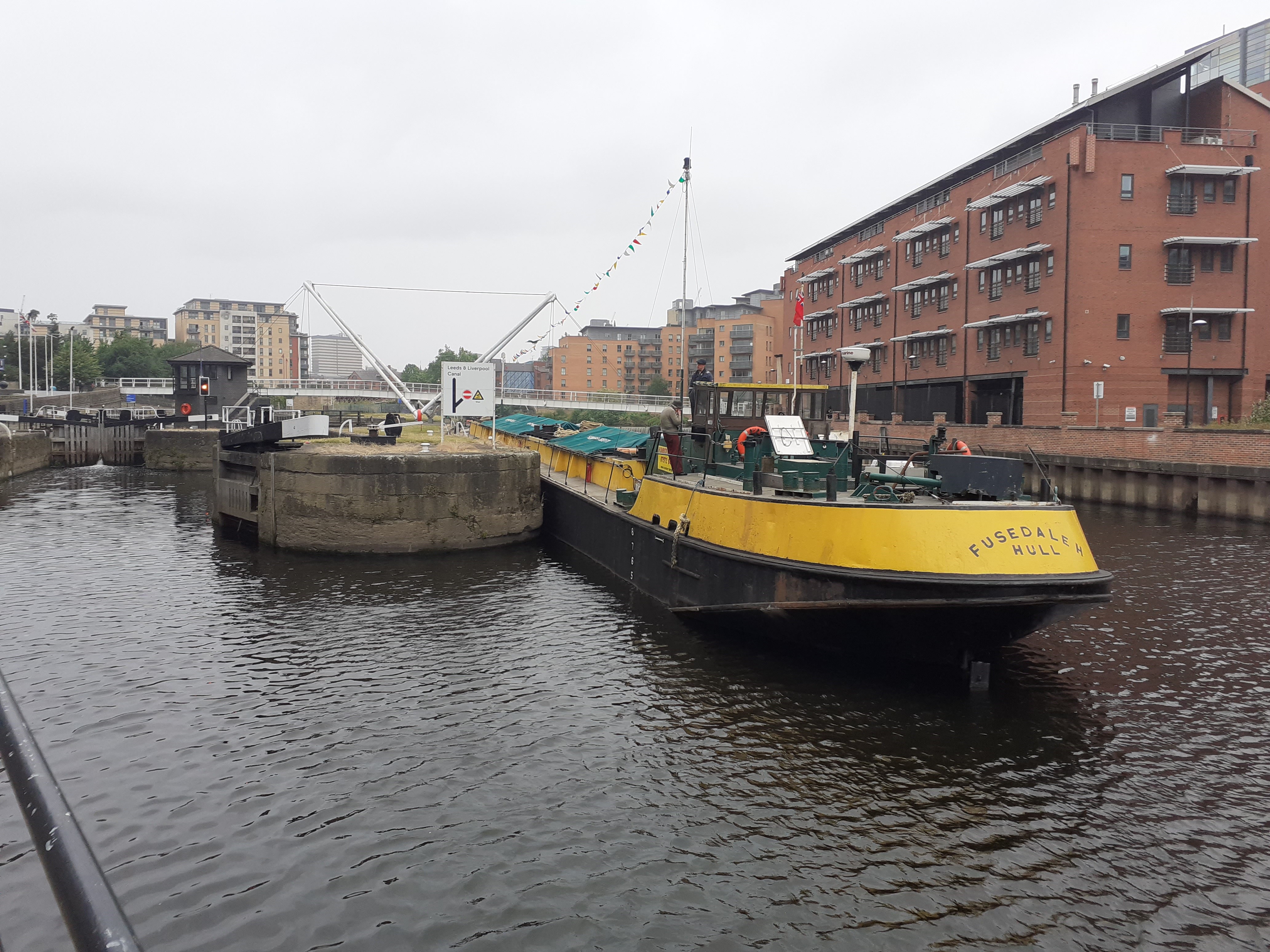
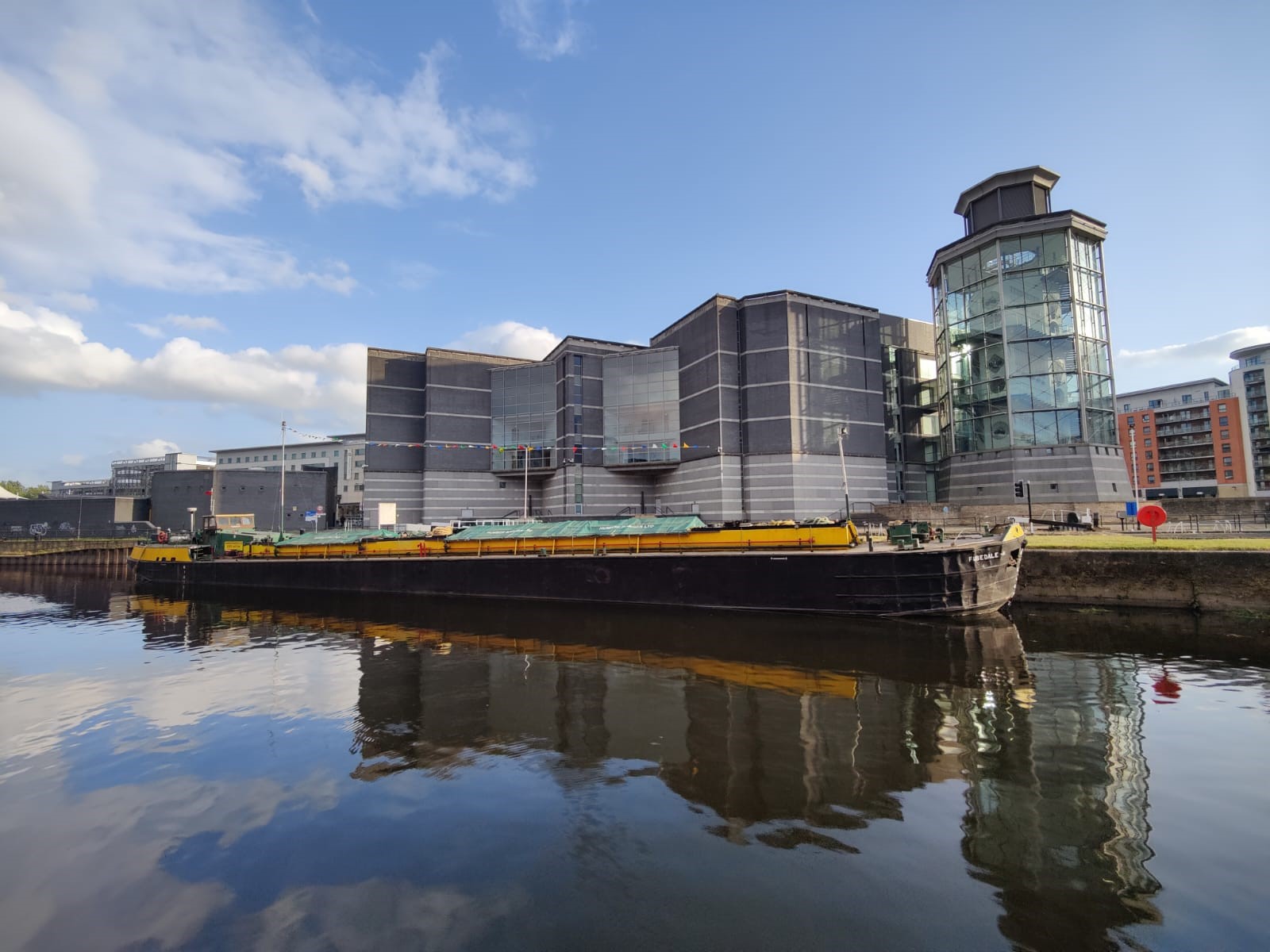
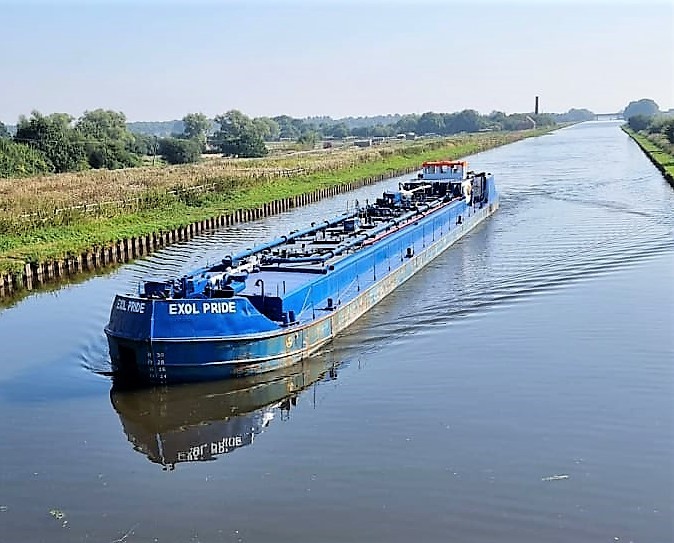
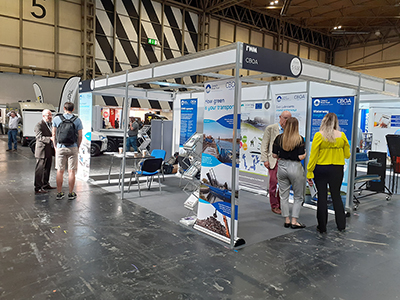
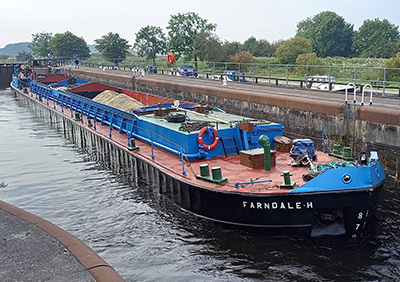
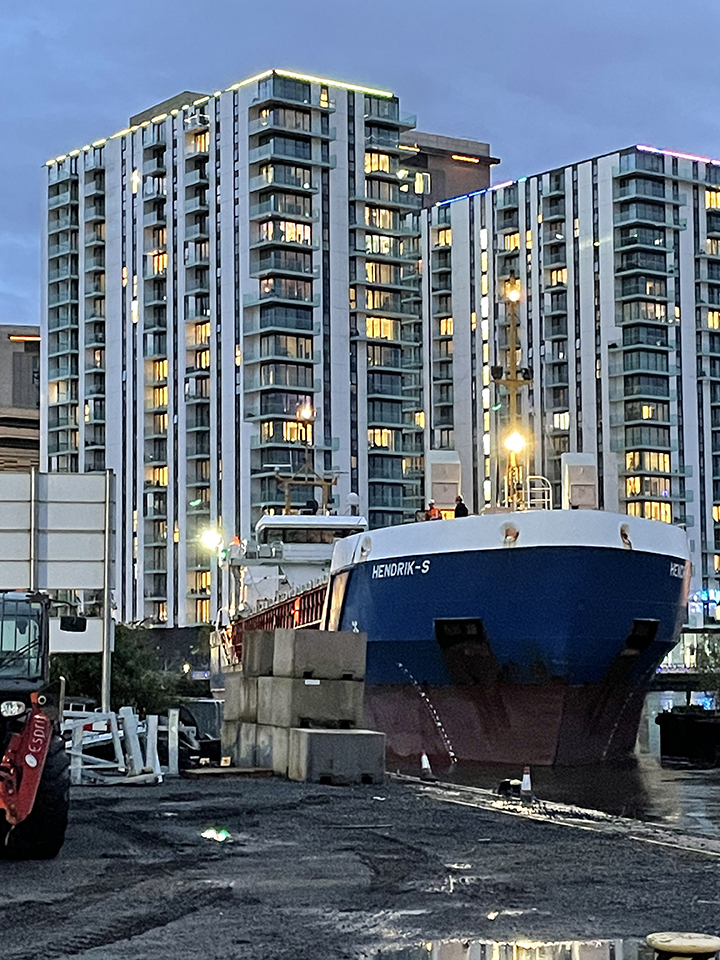
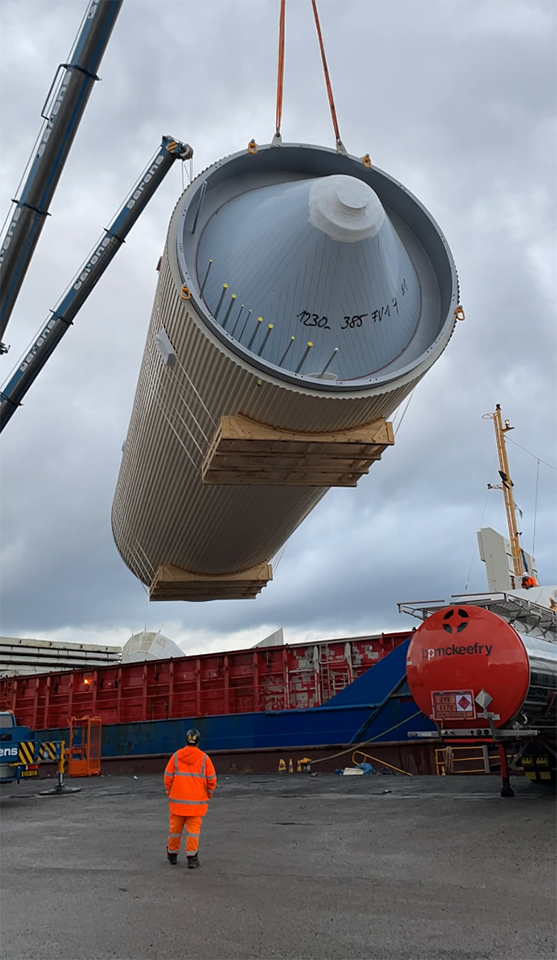
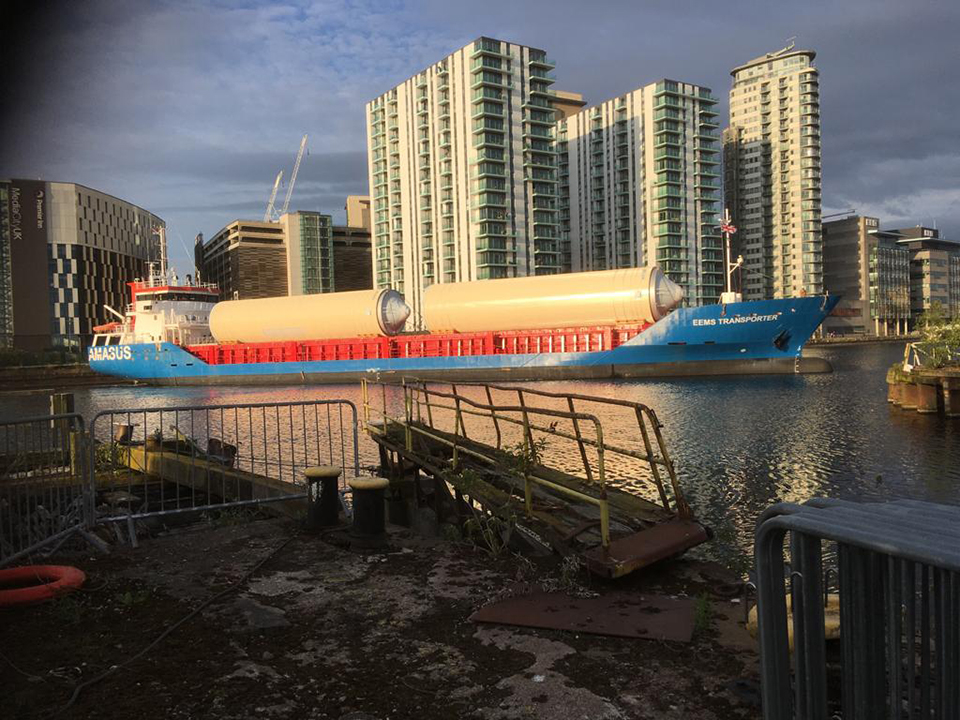
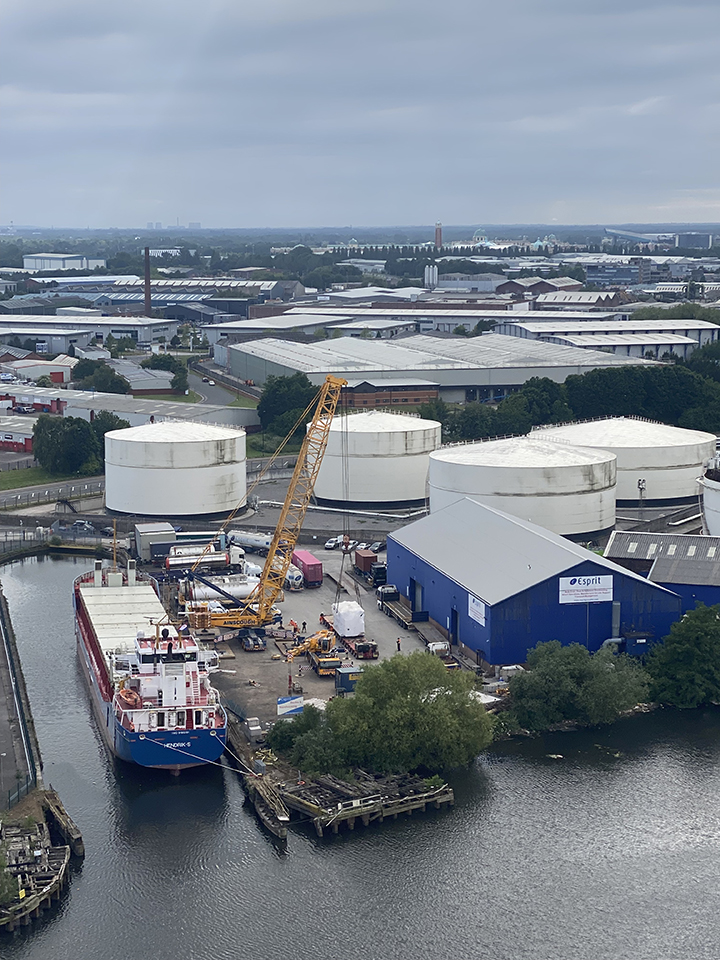
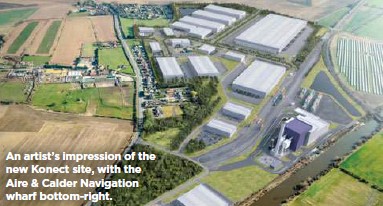
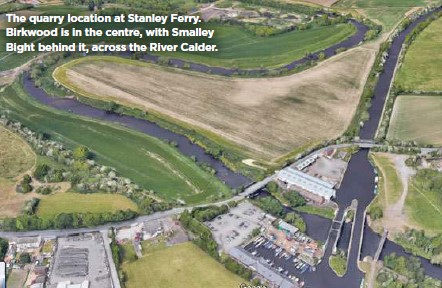
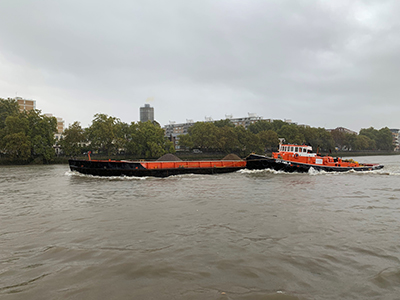
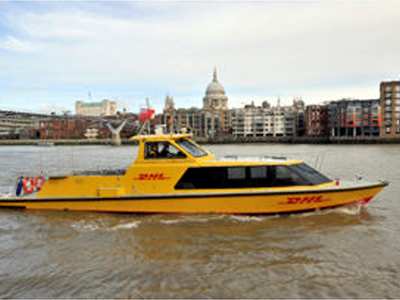 CBOA welcome the news that DHL Express, the parcels delivery service, have joined up with Thames Clippers (who run a passenger service on the River Thames in London). As a result, a water borne parcels delivery service will operate between Wandsworth in west London to central London. Delivery to the boat is by electric vehicle as is the onward delivery to the final destination. This is part of DHL’s GoGreen initiative to reduce greenhouse gas emissions.
CBOA welcome the news that DHL Express, the parcels delivery service, have joined up with Thames Clippers (who run a passenger service on the River Thames in London). As a result, a water borne parcels delivery service will operate between Wandsworth in west London to central London. Delivery to the boat is by electric vehicle as is the onward delivery to the final destination. This is part of DHL’s GoGreen initiative to reduce greenhouse gas emissions.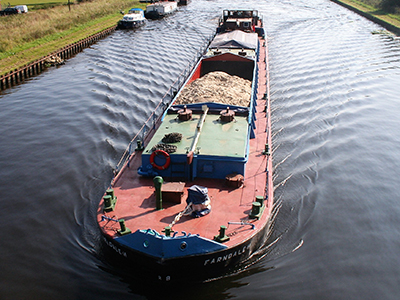 CBOA is calling for fuel duty on diesel for water freight to be treated in the same way as for rail freight. The Government proposes to exempt rail freight from proposed diesel fuel duty increases because it fears the resultant cost increase would drive traffic onto roads, the opposite of what the Government wants.
CBOA is calling for fuel duty on diesel for water freight to be treated in the same way as for rail freight. The Government proposes to exempt rail freight from proposed diesel fuel duty increases because it fears the resultant cost increase would drive traffic onto roads, the opposite of what the Government wants.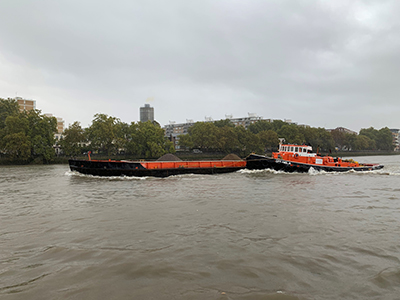 The Commercial Boat Operators’ Association today welcomed the remarks by Rebecca Pow, MP, Parliamentary Under Secretary at the Department for the Environment, Food and Rural Affairs, about “starting to get freight back on to the waterways. With the move to net zero and to cleaner air, this is actually a huge asset, and we are starting to realise that canals can have a rebirth as transport links.” The Minister was speaking during on Adjournment Debate last Thursday about canals and their restoration.
The Commercial Boat Operators’ Association today welcomed the remarks by Rebecca Pow, MP, Parliamentary Under Secretary at the Department for the Environment, Food and Rural Affairs, about “starting to get freight back on to the waterways. With the move to net zero and to cleaner air, this is actually a huge asset, and we are starting to realise that canals can have a rebirth as transport links.” The Minister was speaking during on Adjournment Debate last Thursday about canals and their restoration.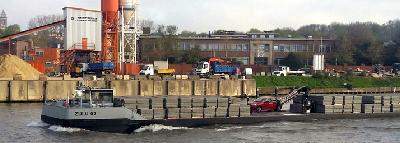
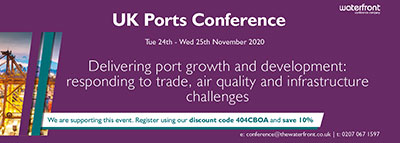
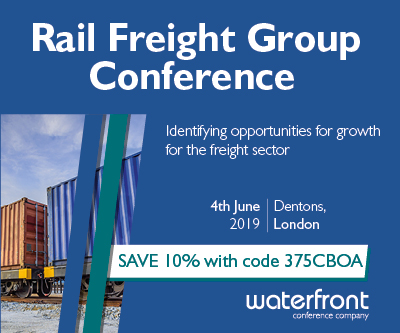 CBOA are supporting the 27th Annual Rail Freight Group Conference on June 4th in London.
CBOA are supporting the 27th Annual Rail Freight Group Conference on June 4th in London.